animas formatae infundere terrae!
Breathing life into inanimate earth.
Many of the designs begin with a spark of inspiration from the Classical world, but equally a close observation of the natural world and its elemental powers shape each creation. The artist’s hand brings forth the life within the clay, and areas are often left exposed under a clear glaze to celebrate the unique creamy tone of this particular Cornish stoneware clay, mined locally in St. Agnes. Each ceramic fruit is hand built and the clay is worked until an organic, gnarly and natural, often quite a characterful, form emerges from the raw material.
The Pomegranate
MALUM MALUM GRANATUM:
‘wicked little pome-apple’
Proserpina’s Pomegranates
Legend has it that while plucking flowers on the meadows of Sicily, the god Pluto sundered open the earth, snatched the goddess Proserpina and took her down to the Underworld to make her his queen. When her mother, Ceres (the goddess of the harvest) learnt of this, she refused to let the Earth fruit until her daughter was returned. It was agreed that Proserpina could return, provided that she had not eaten the food of the Underworld, but Proserpina had tasted the seeds of a pomegranate and so was forced to remain there for part of the year. During this time, plants die back and growth halts for winter, but her return in the spring brings with it new growth, renewal and prosperity. From the pomegranate’s association with Proserpina, the fruit has become a potent symbol of rebirth, eternity and cyclical renewal.
The volcanic glaze on the ornamental ceramic pomegranates was inspired by the magma of Mt. Etna in Sicily, near where Proserpina was taken, that oozes up as bright, flaming fissures on the chard face of the volcano. Beneath Mt. Etna is also fabled to be the fiery forge of the blacksmith god Vulcan, where he crafts arms and finely wrought gifts for the gods: a source of all divine creations.
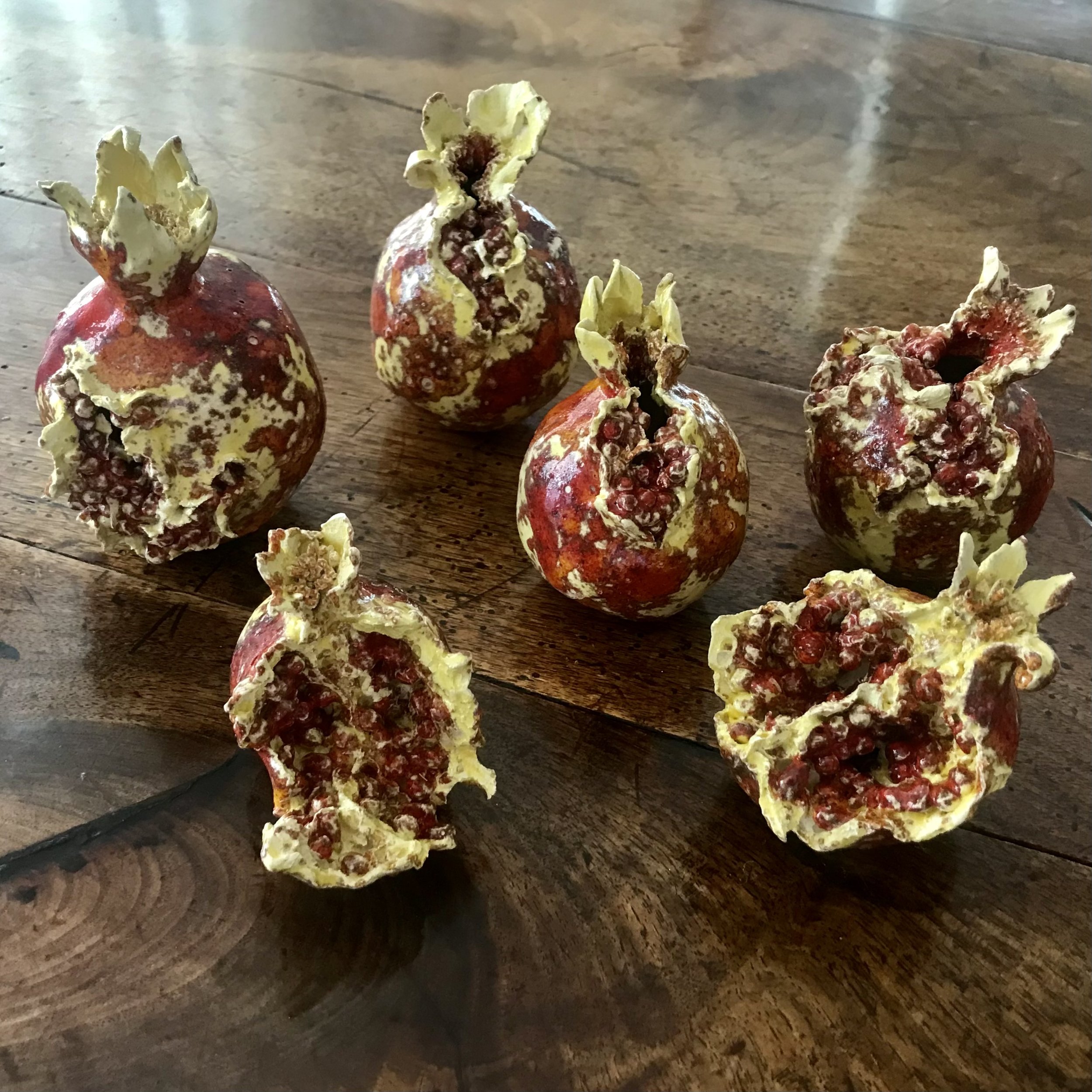
Rupture and Rapture: A cluster of ruptured ceramic pomegranates.
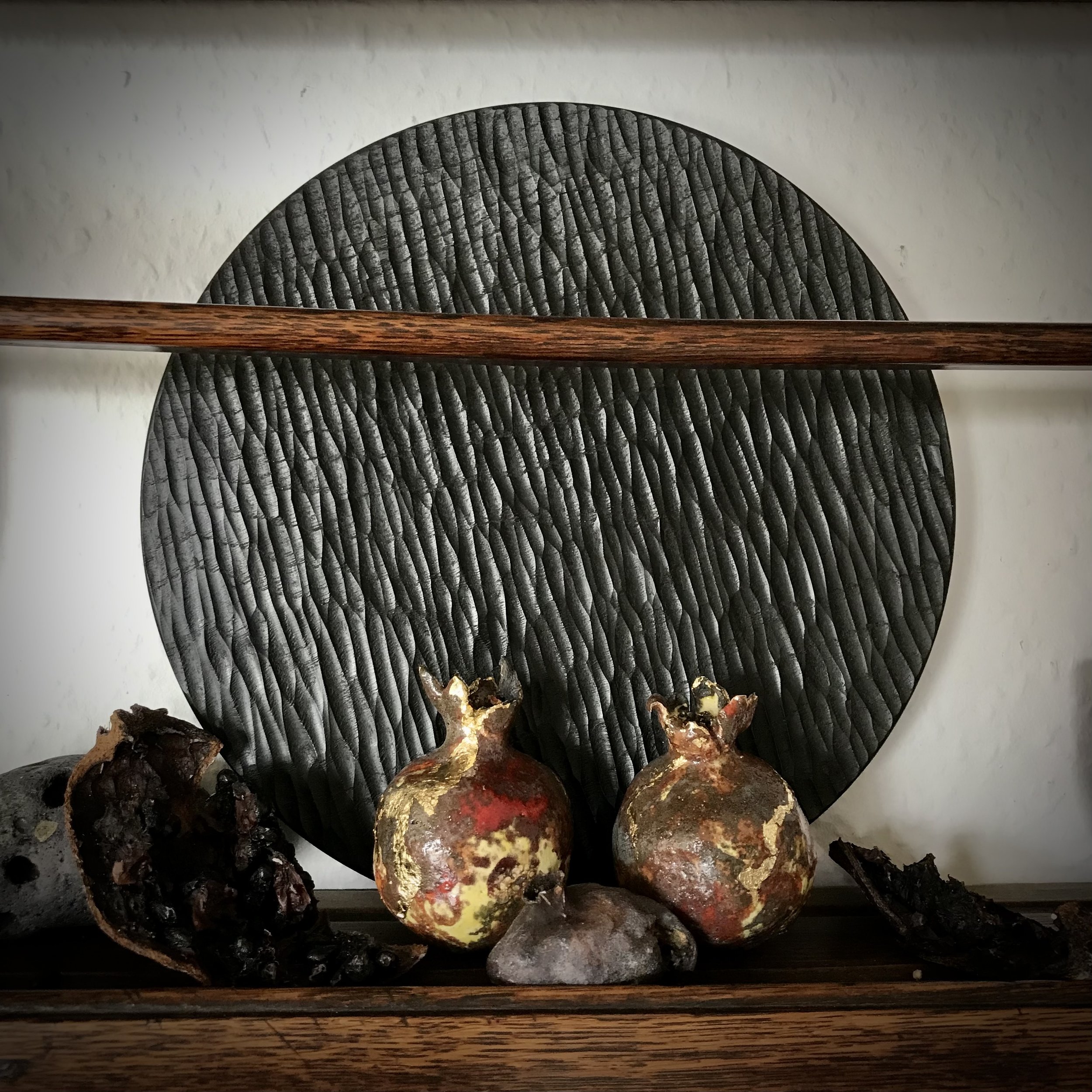
Chard Remains: black clay pomegranates, glazed and gilded, beside the chard remains of organic pomegranate husks.
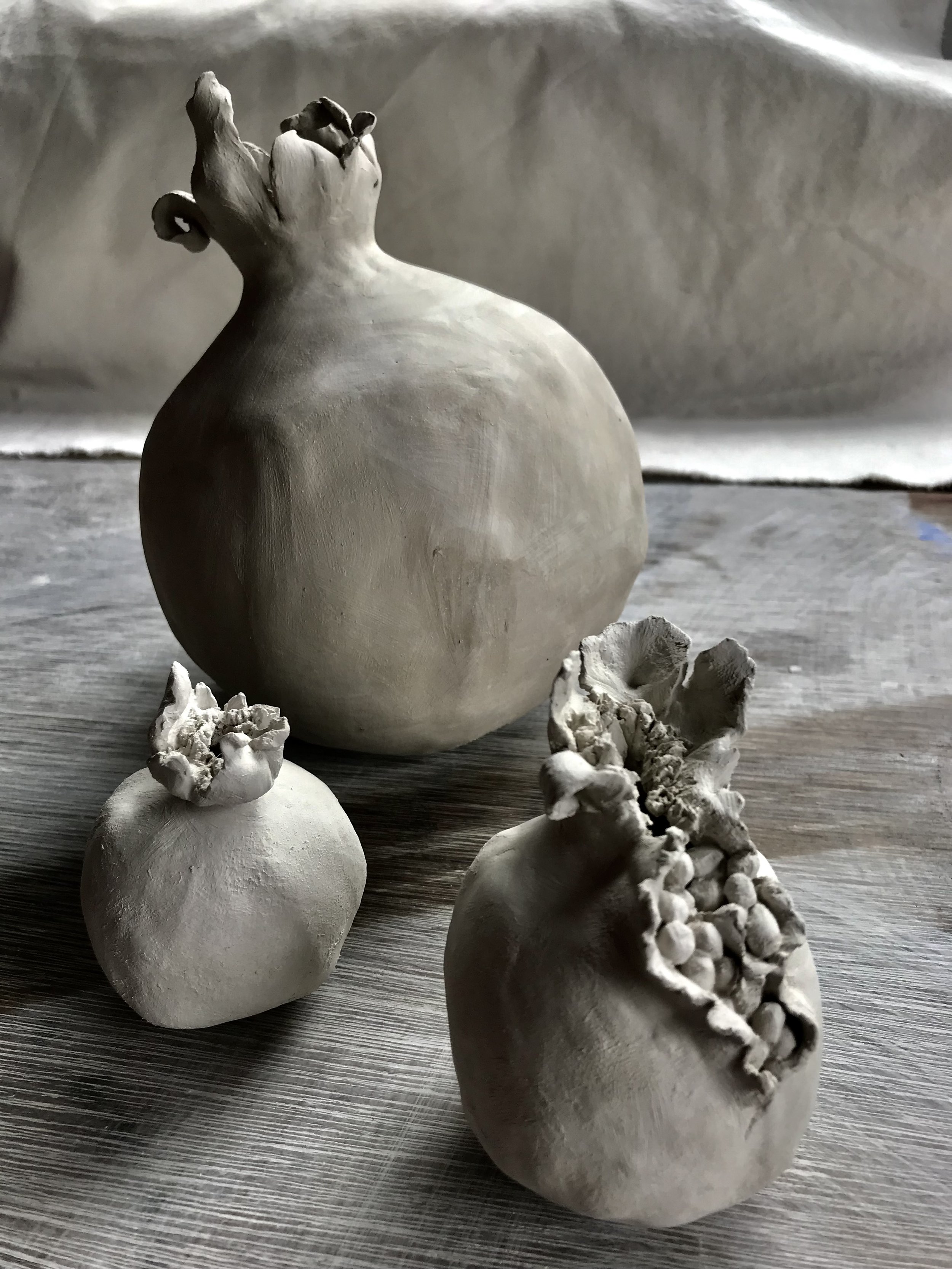
Raw Form: greenware pomegranates hand sculpted from Cornish stoneware clay.
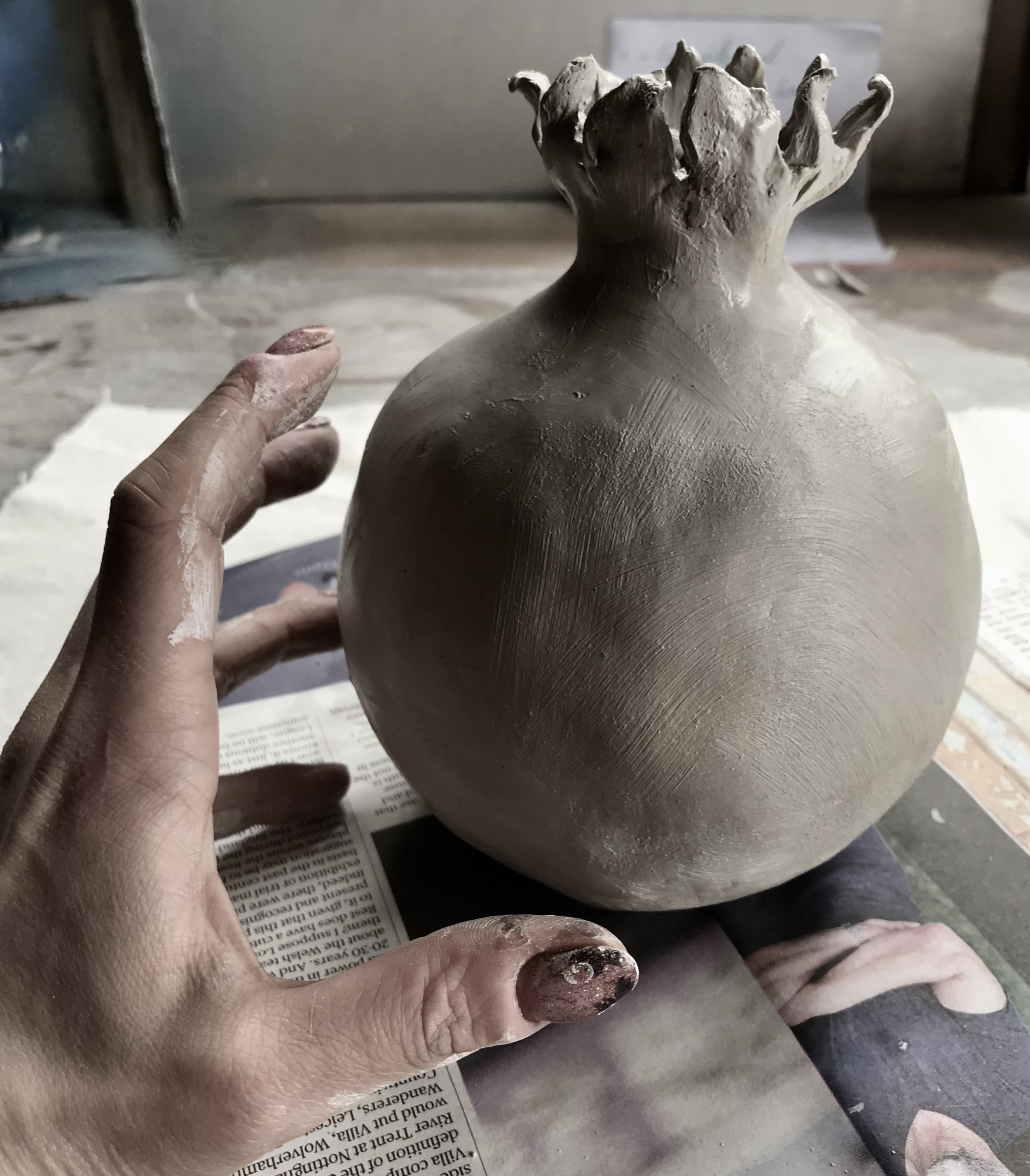
Temptation: greenware pomegranate hand formed from Cornish stoneware clay.
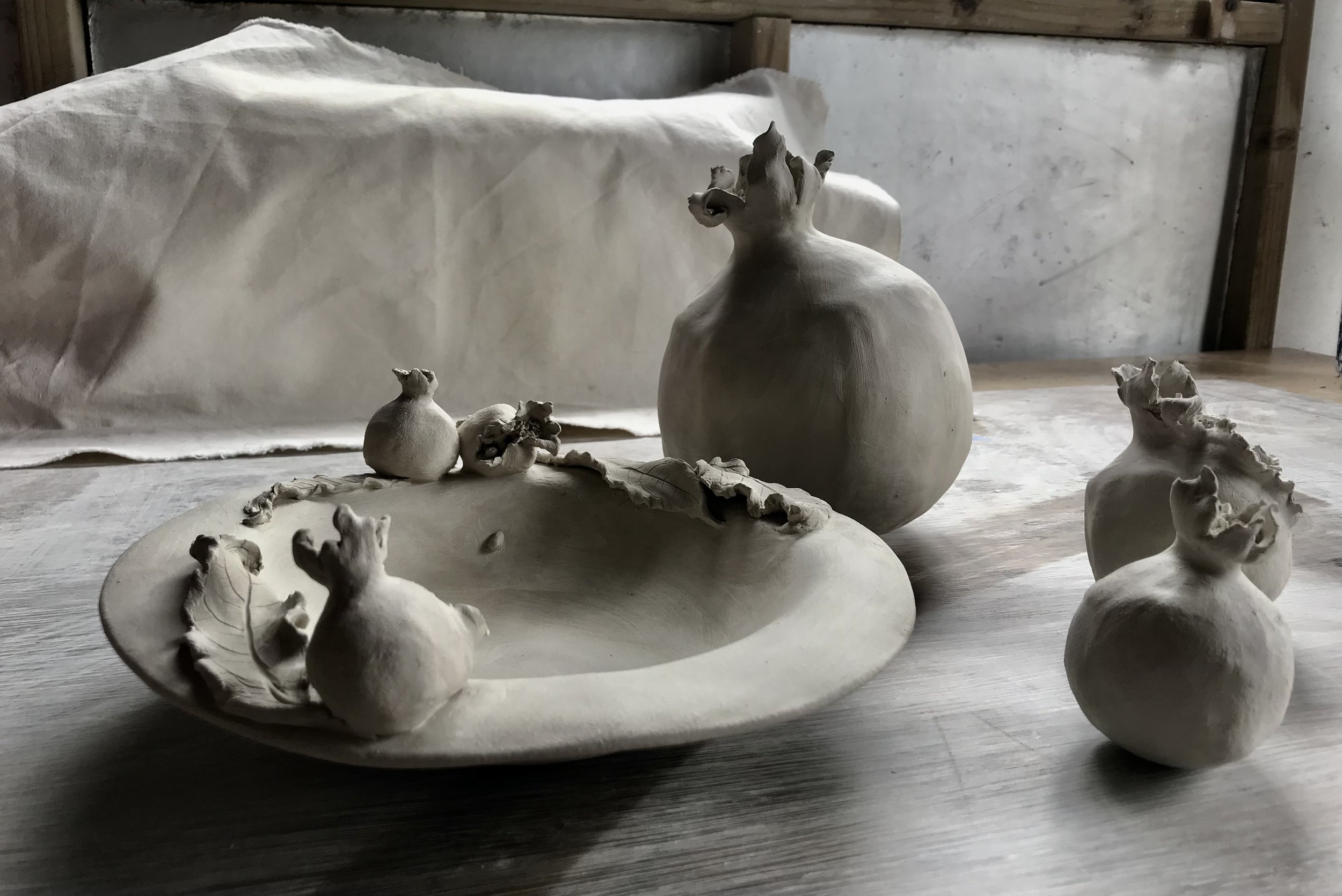
Natural State: greenware pomegranate collection (Cornish stoneware clay).
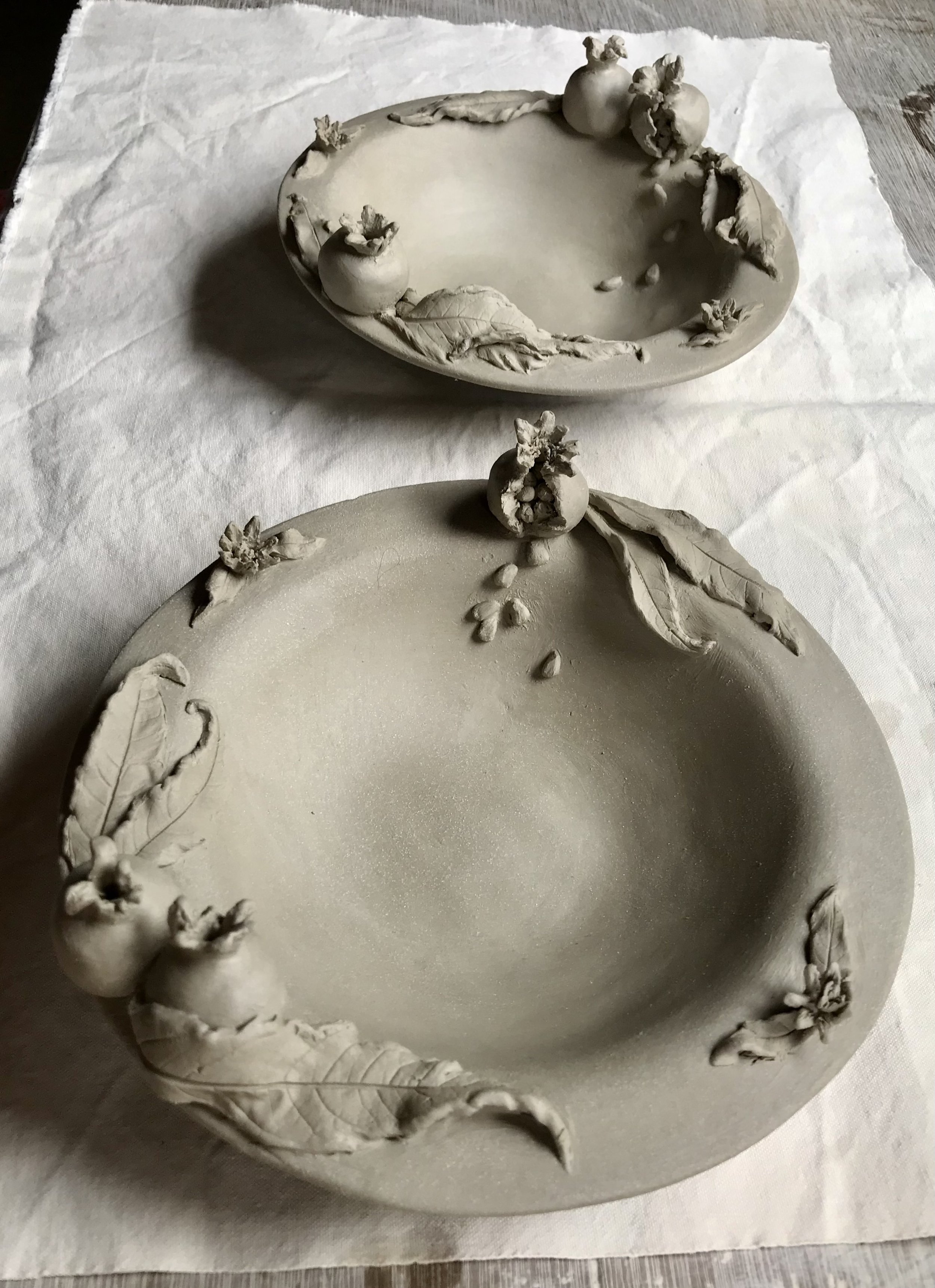
Natural State: greenware pomegranate bowls hand built in Cornish stoneware clay.
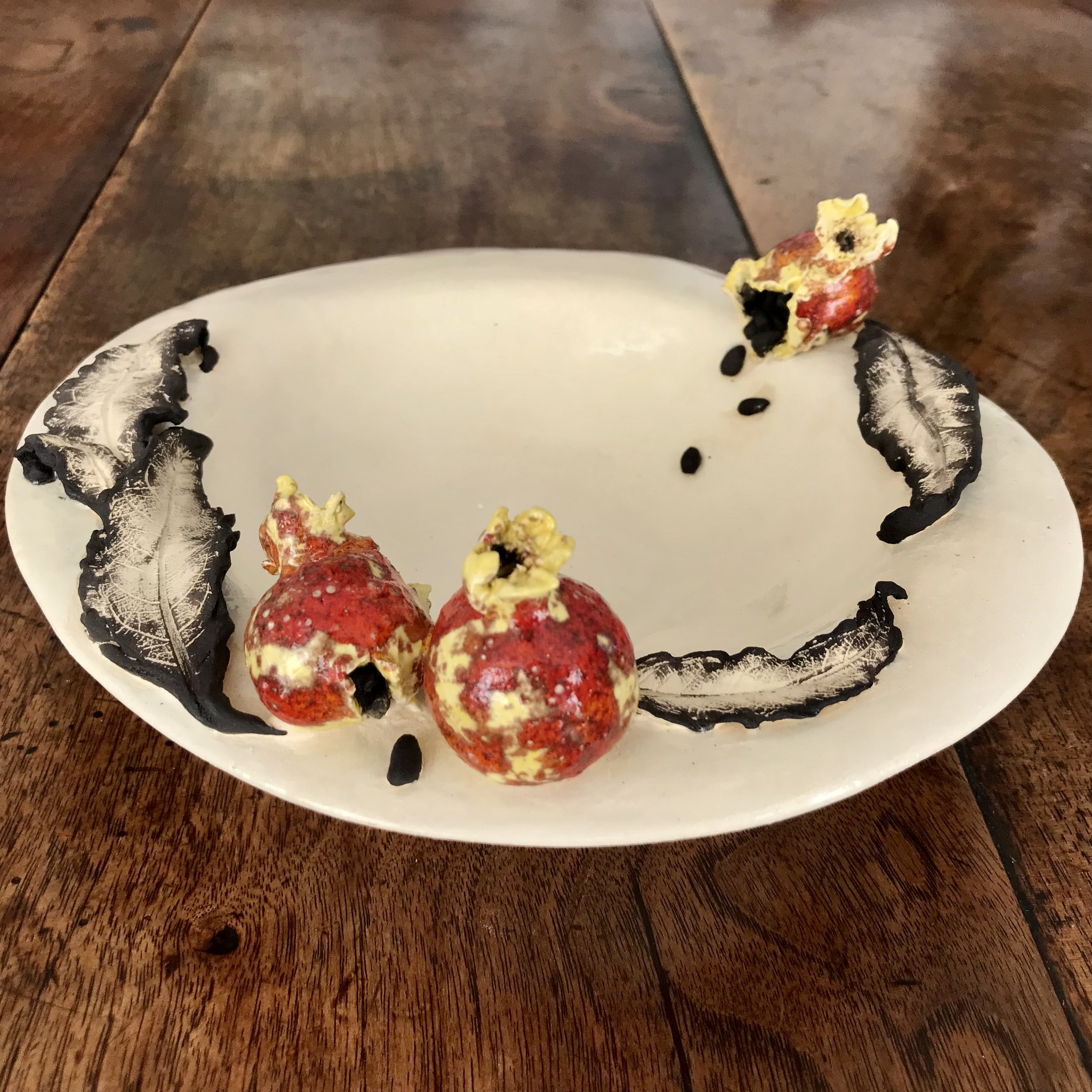
Volcanic Victuals: hand built stoneware bowl with sculpted pomegranates, glazed, beside leaves and seeds brushed with black powder.
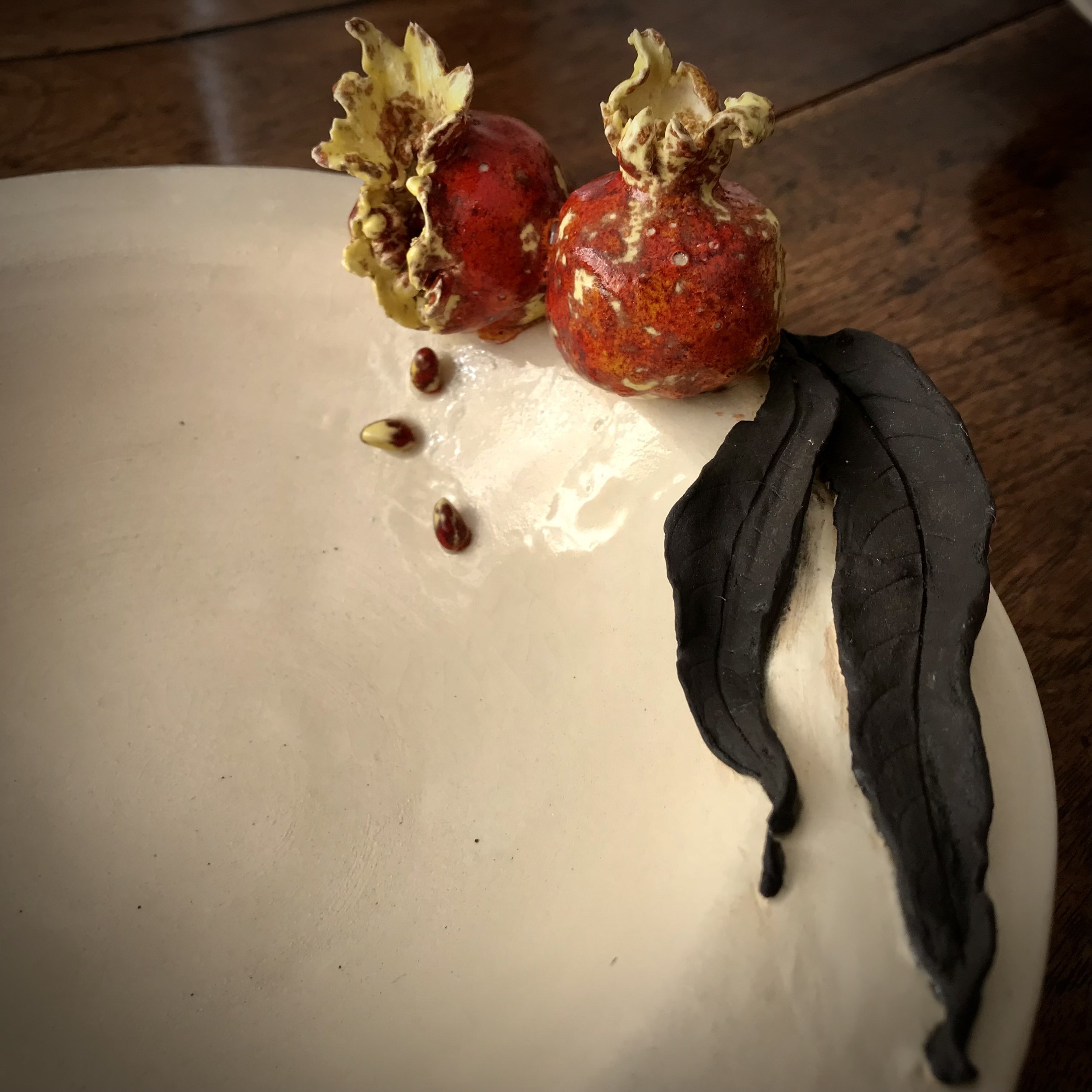
Volcanic Victuals: detail from a stoneware bowl with black powder painted leaves and glazed pomegranates.
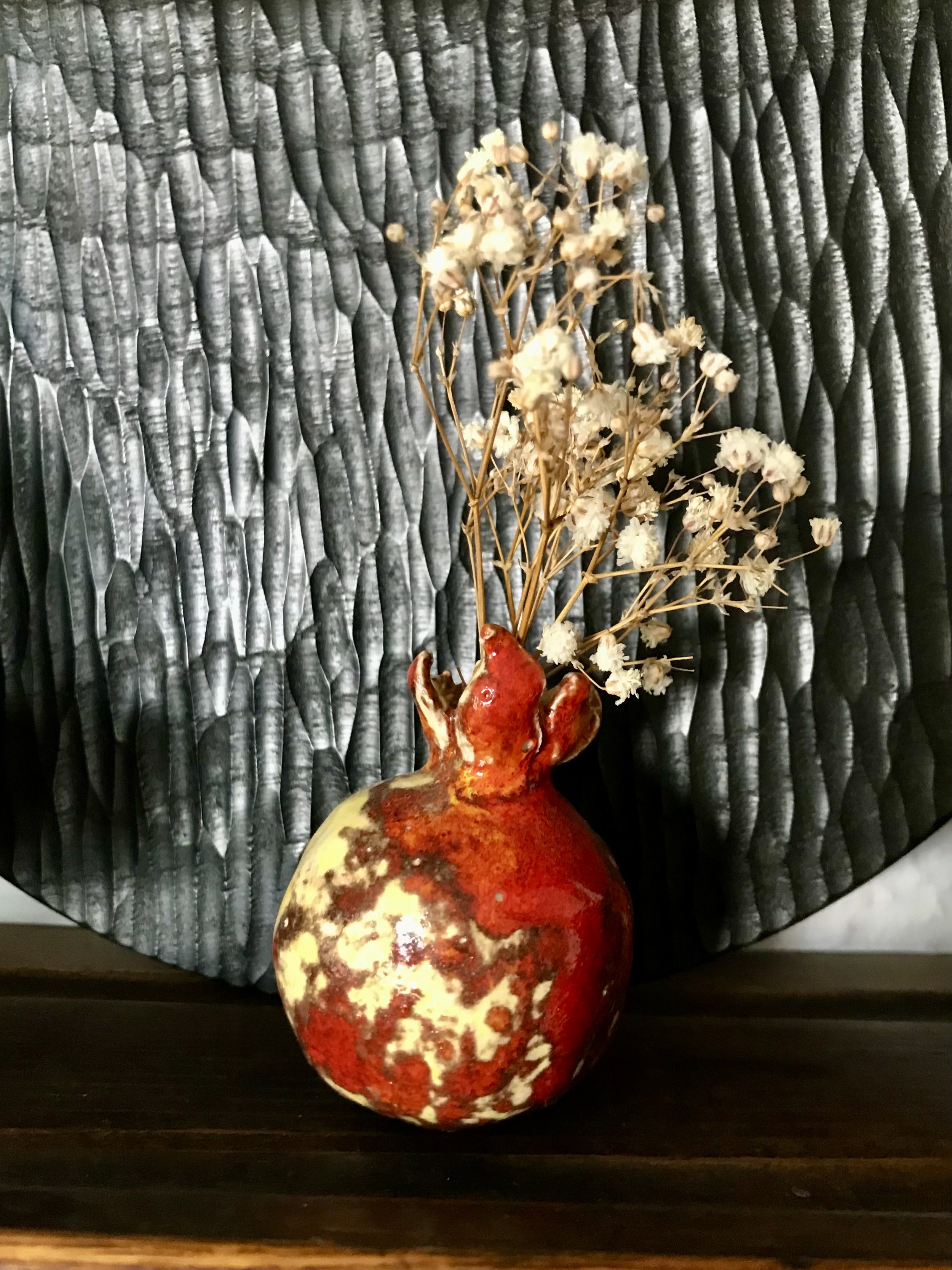
memento mei: Proserpina's pomegranate.
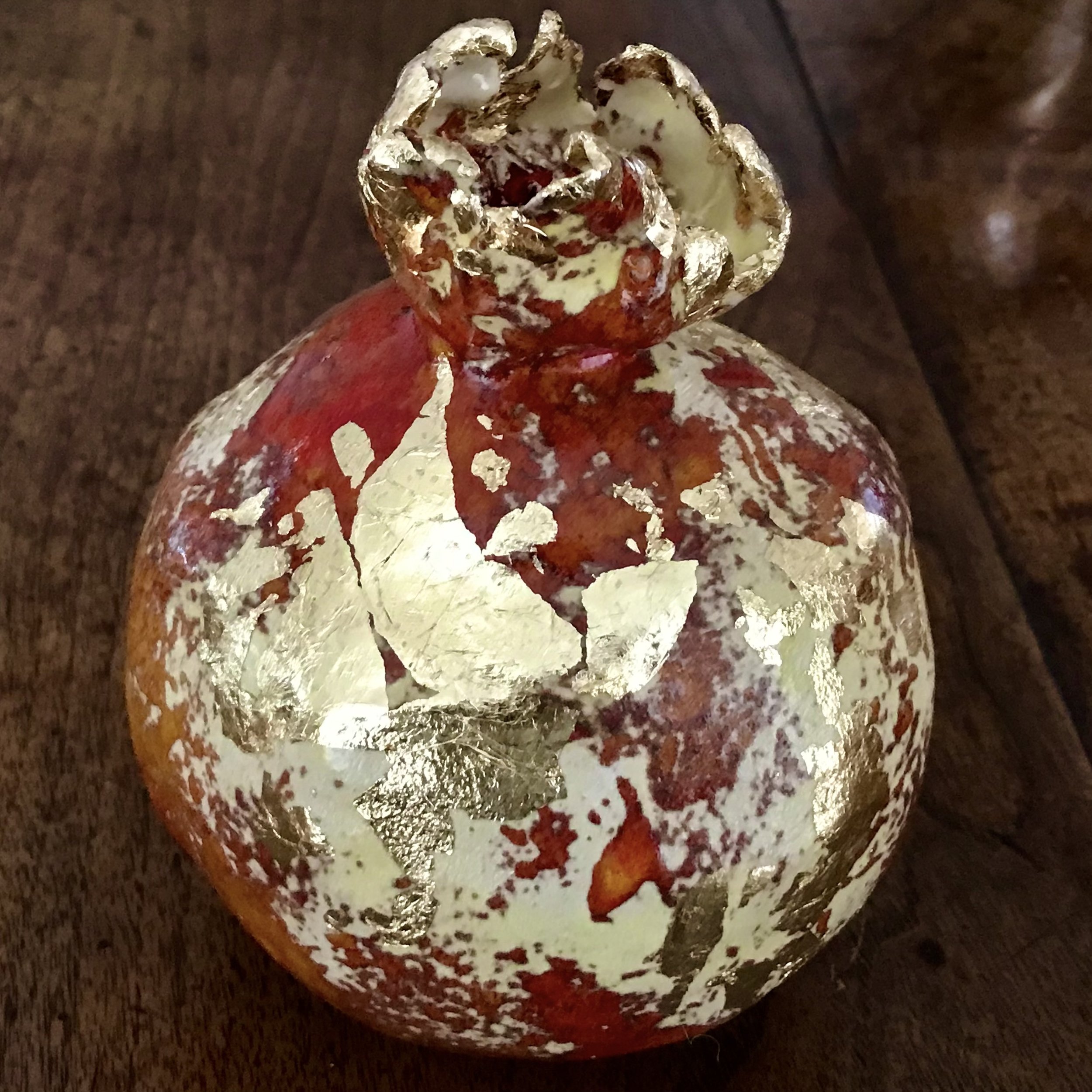
Gilt and Pleasure: a glazed and gilded pomegranate.
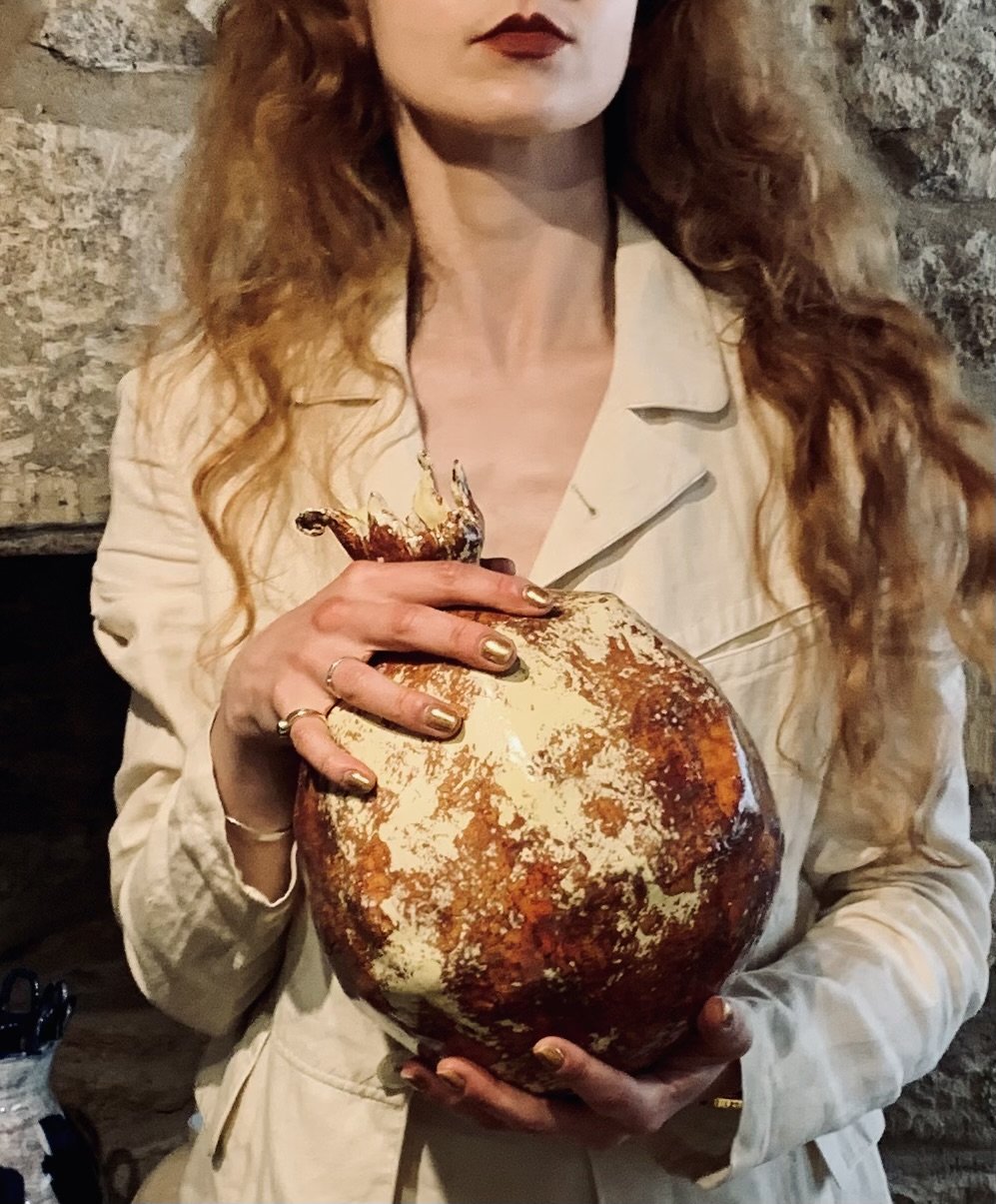
Colossus: larger than life sized pomegranate, hand sculpted and glazed.
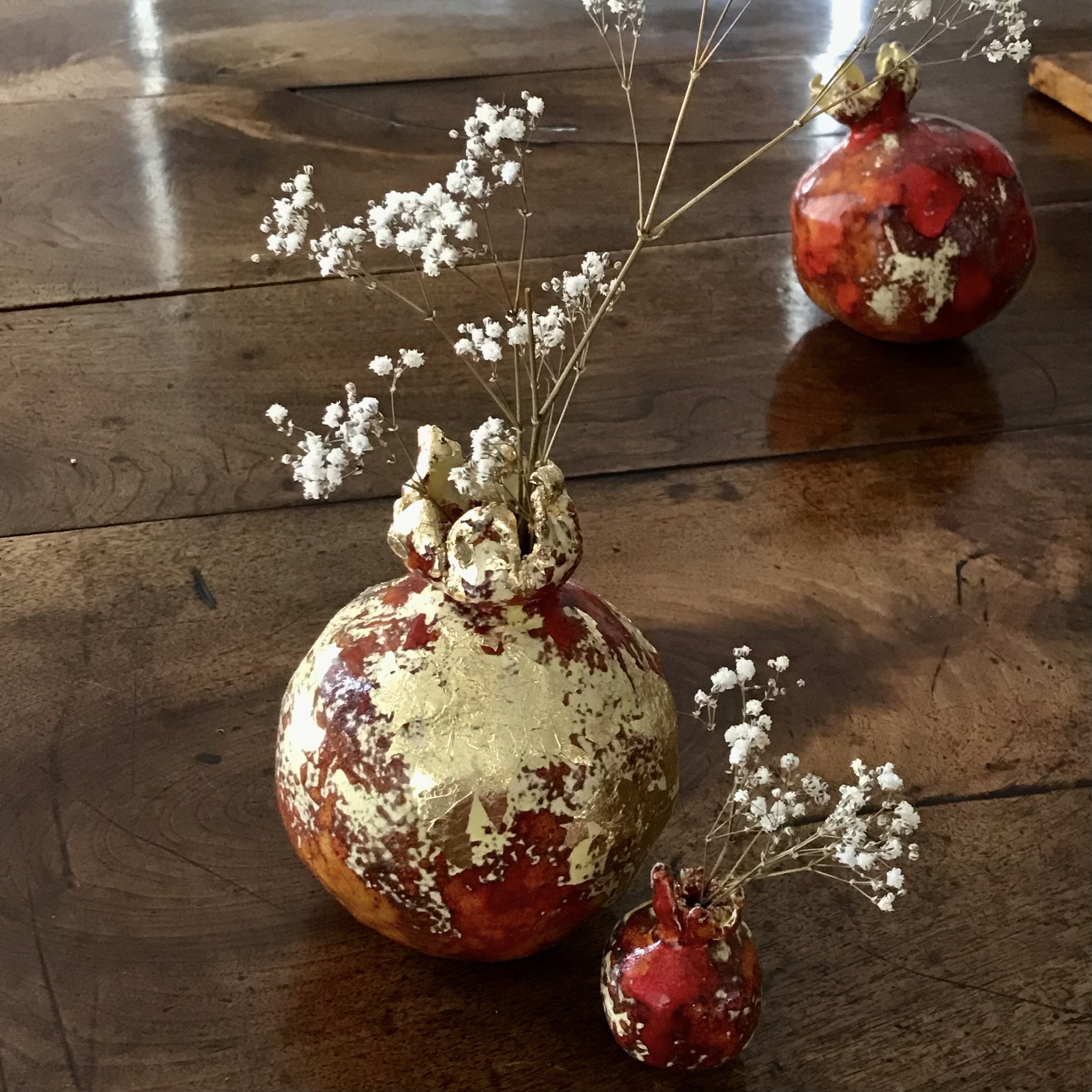
Angels Breath: three glazed pomegranates.
Citrus Collection
The earliest ‘lemon remains’ were discovered in the Roman Forum and date between the late first century BCE to the early first century CE. The citron (Citrus Medica), the ancestor of modern lemons, was a rare and exotic good that became a status symbol of wealth.
Persephone's symbolic pomegranate led to a quest for other forbidden fruits, principally the citrus variety, which may have been the real golden fruit in legendary gardens of paradise.
The latest citrus collection was inspired by a desire to follow in the footsteps of the 17th century botanist Johann Christoph Volkamer, whose engravings documented the rarest and most bizarre citrus fruits in the grand gardens of Europe at a time when a competitive craze for collecting them had developed amongst the aristocracy.
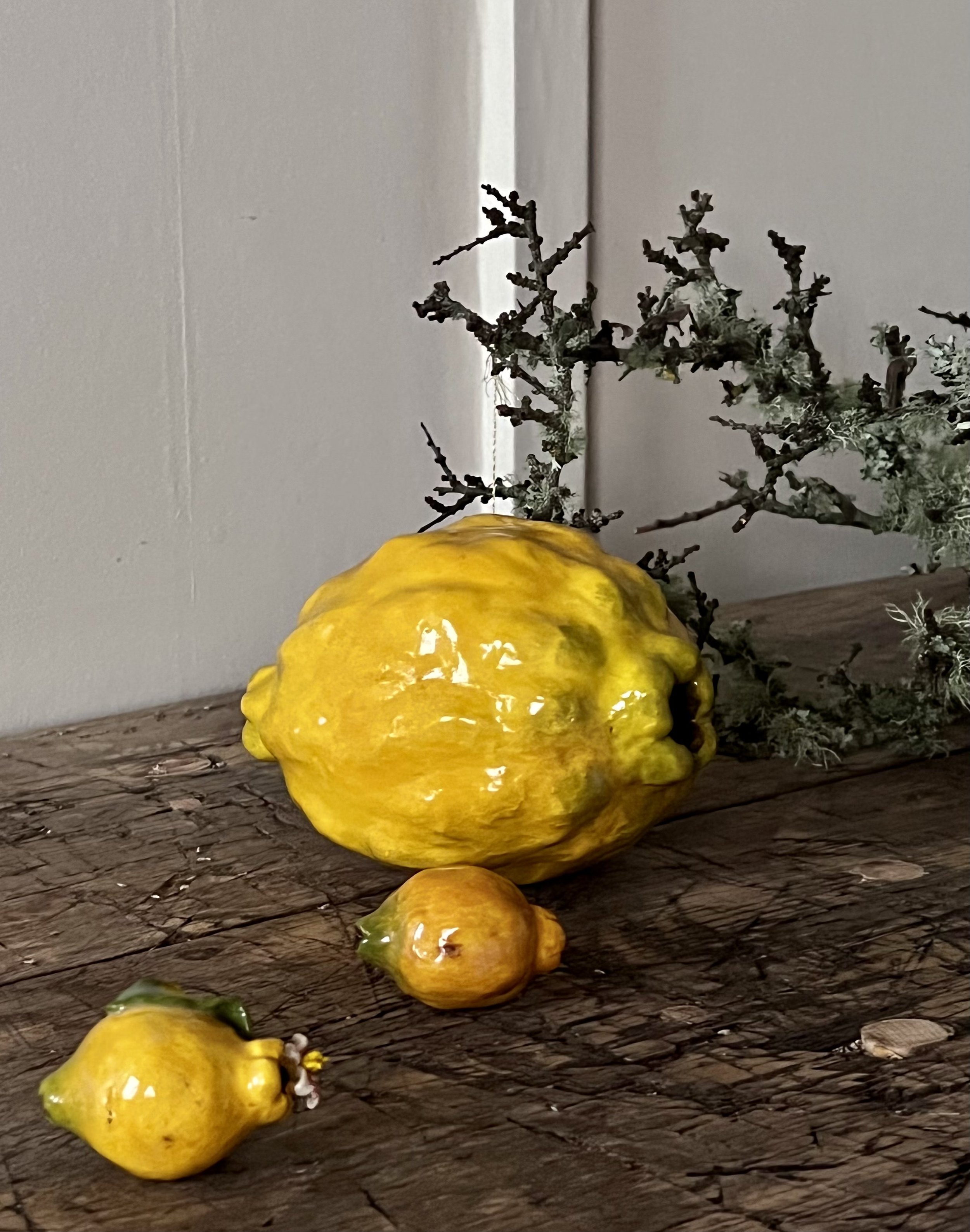
Fruit For The Feast: three unique citrus fruits, decorated and sculpted from Cornish stoneware clay by hand.
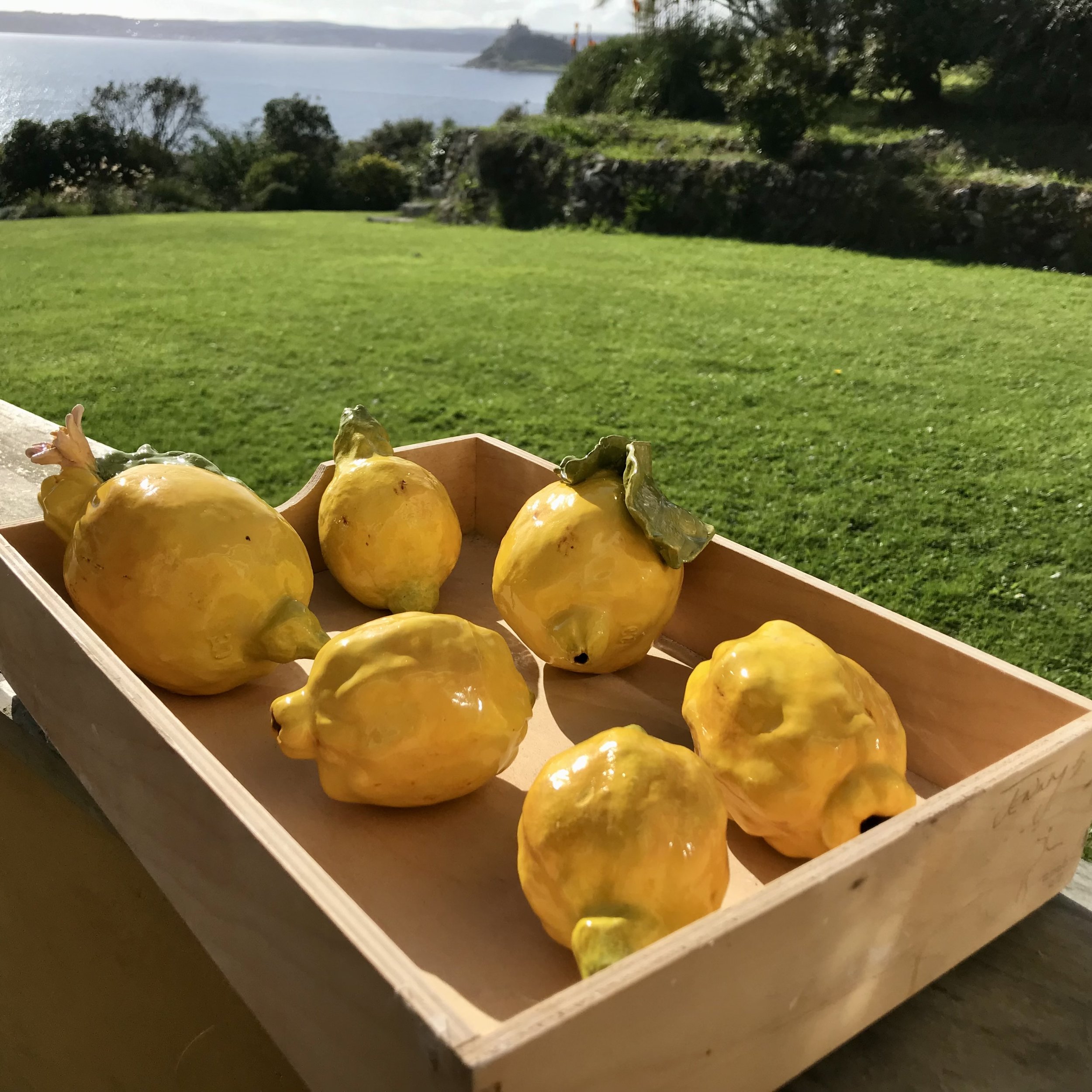
Rare Exports: a tray of sunny yellow citrus fruits, all sculpted from Cornish stoneware clay and painted by hand.
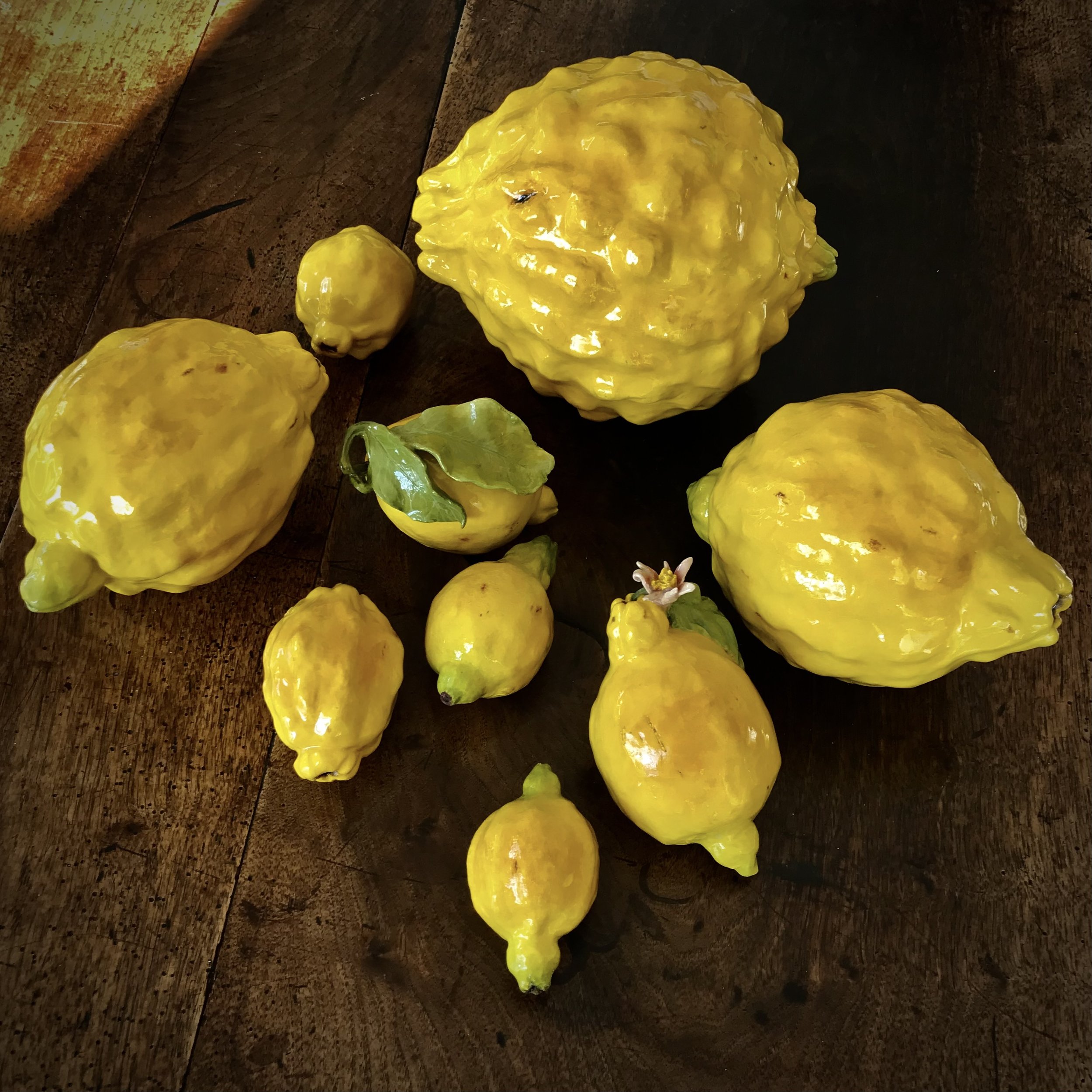
A Golden Gathering: rare citrus varieties, sculpted from Cornish stoneware clay and painted by hand.
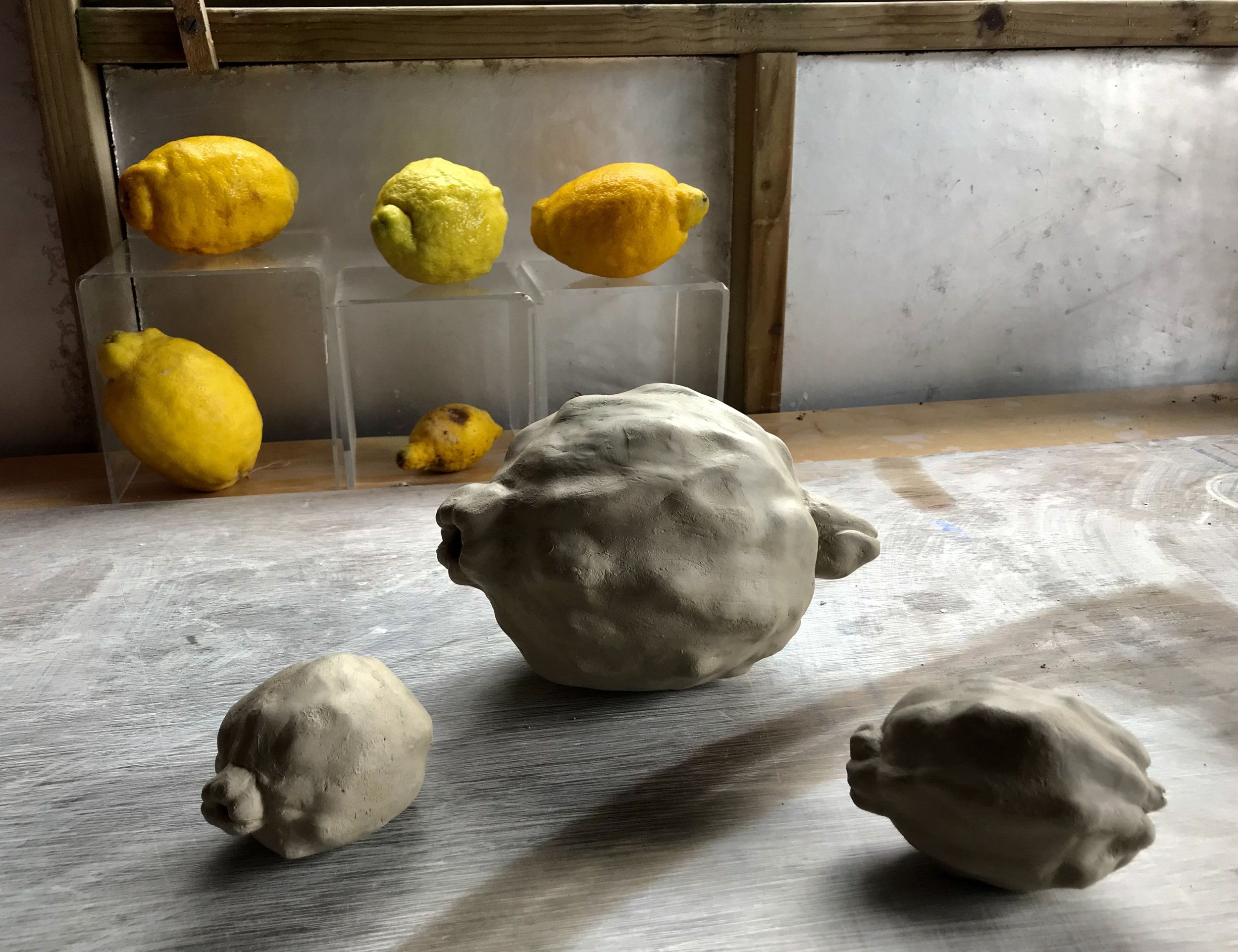
A Study in Stoneware: a collection of organic lemon specimens and three greenware clay lemons.
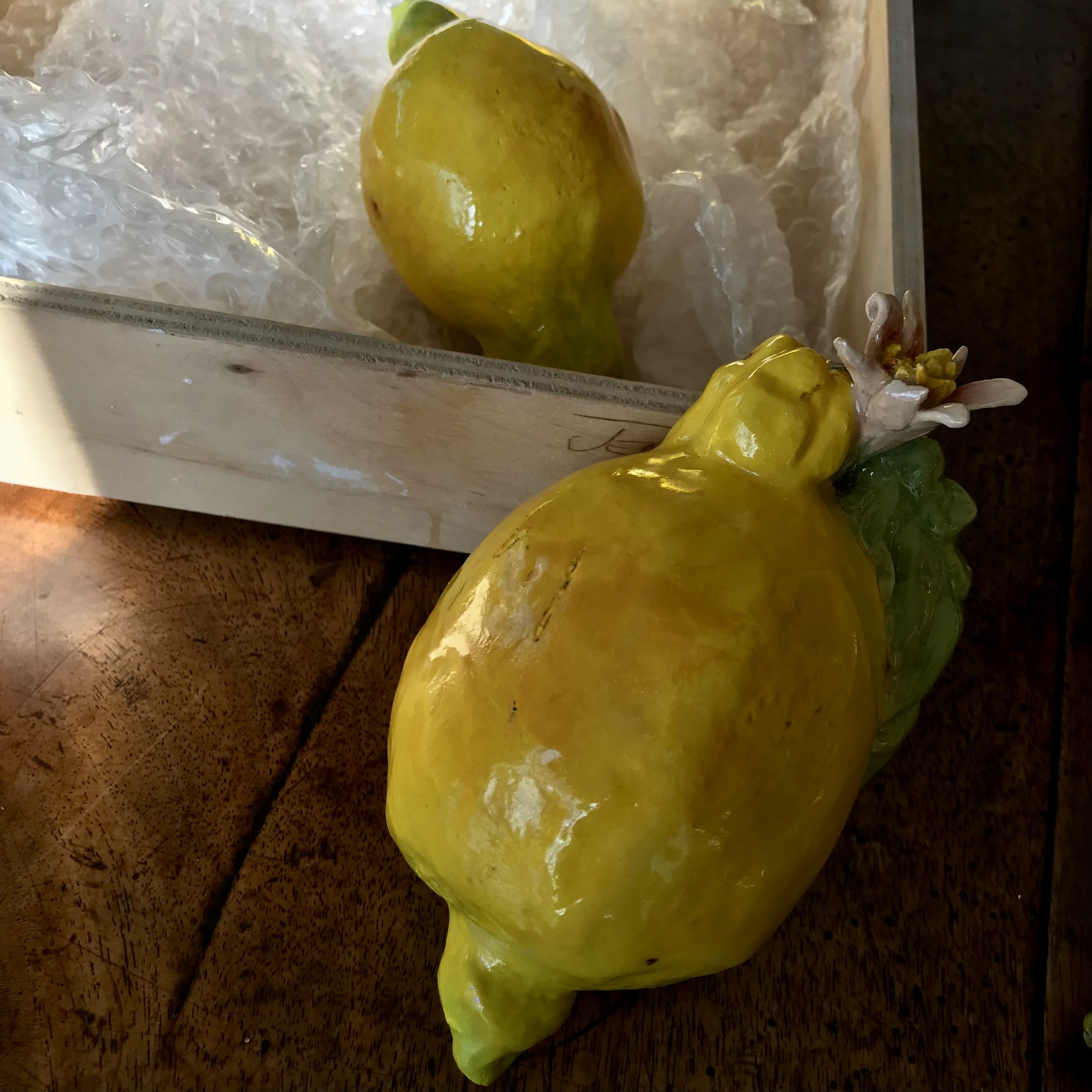
Picked Pair: Citrus Limon Femminello
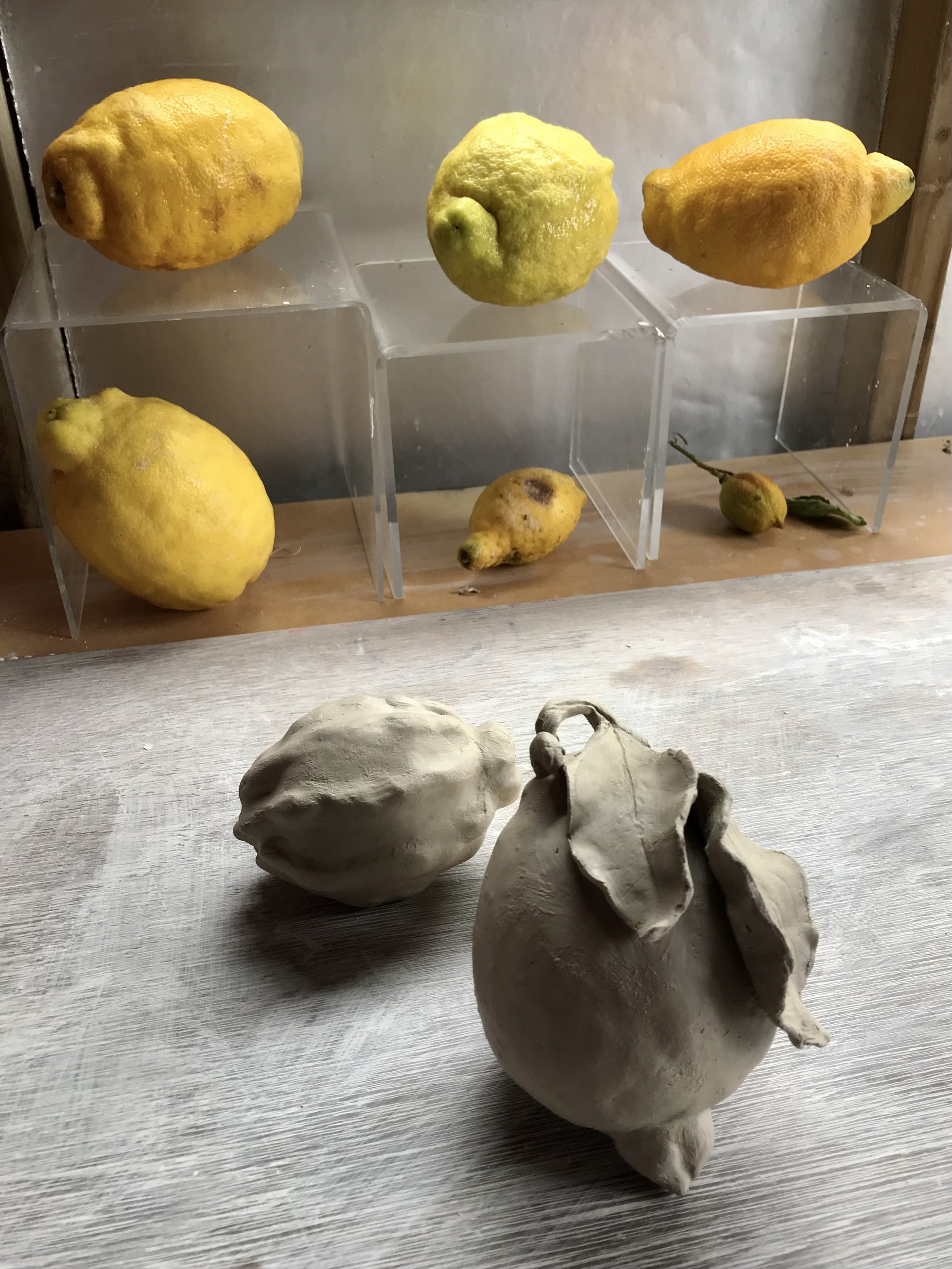
A Study in Stoneware: a collection of organic lemon specimens and two greenware clay lemons.
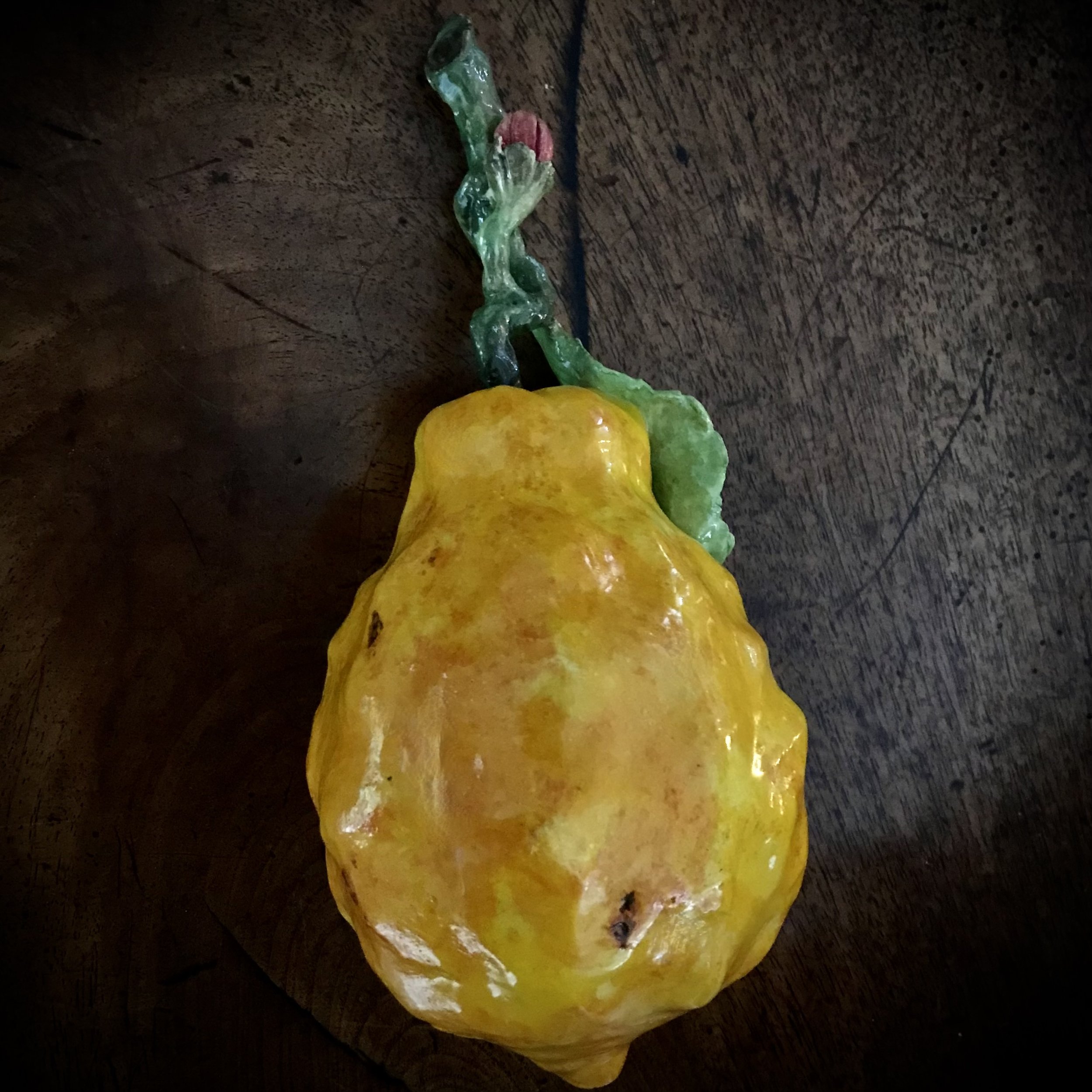
Citrus Limonimedica ‘Bicolor’: modelled, in Cornish stoneware clay, after a variety created by the Medici and spotted in the Boboli gardens of Florence.
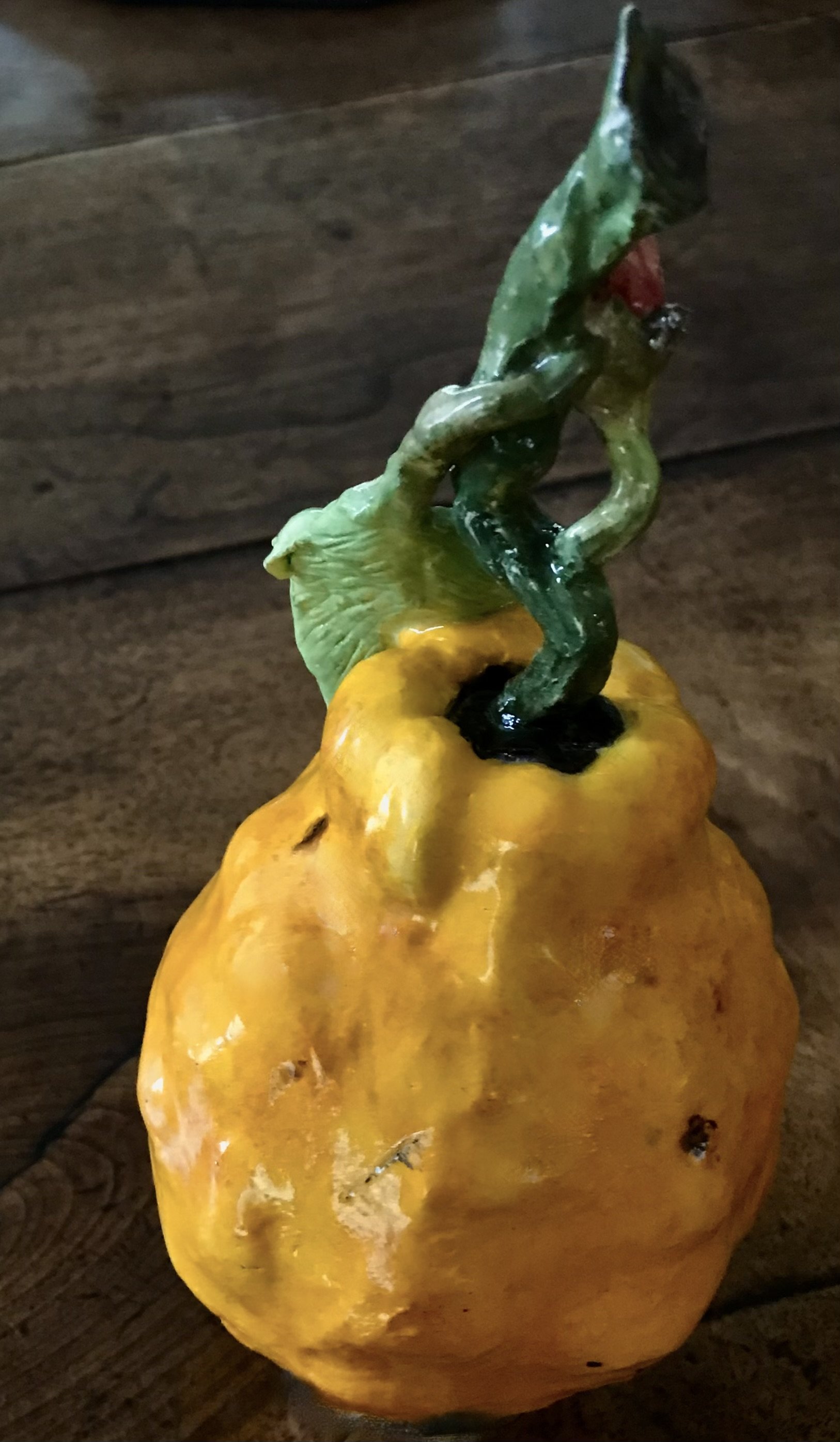
Citrus Limonimedica ‘Bicolor’.
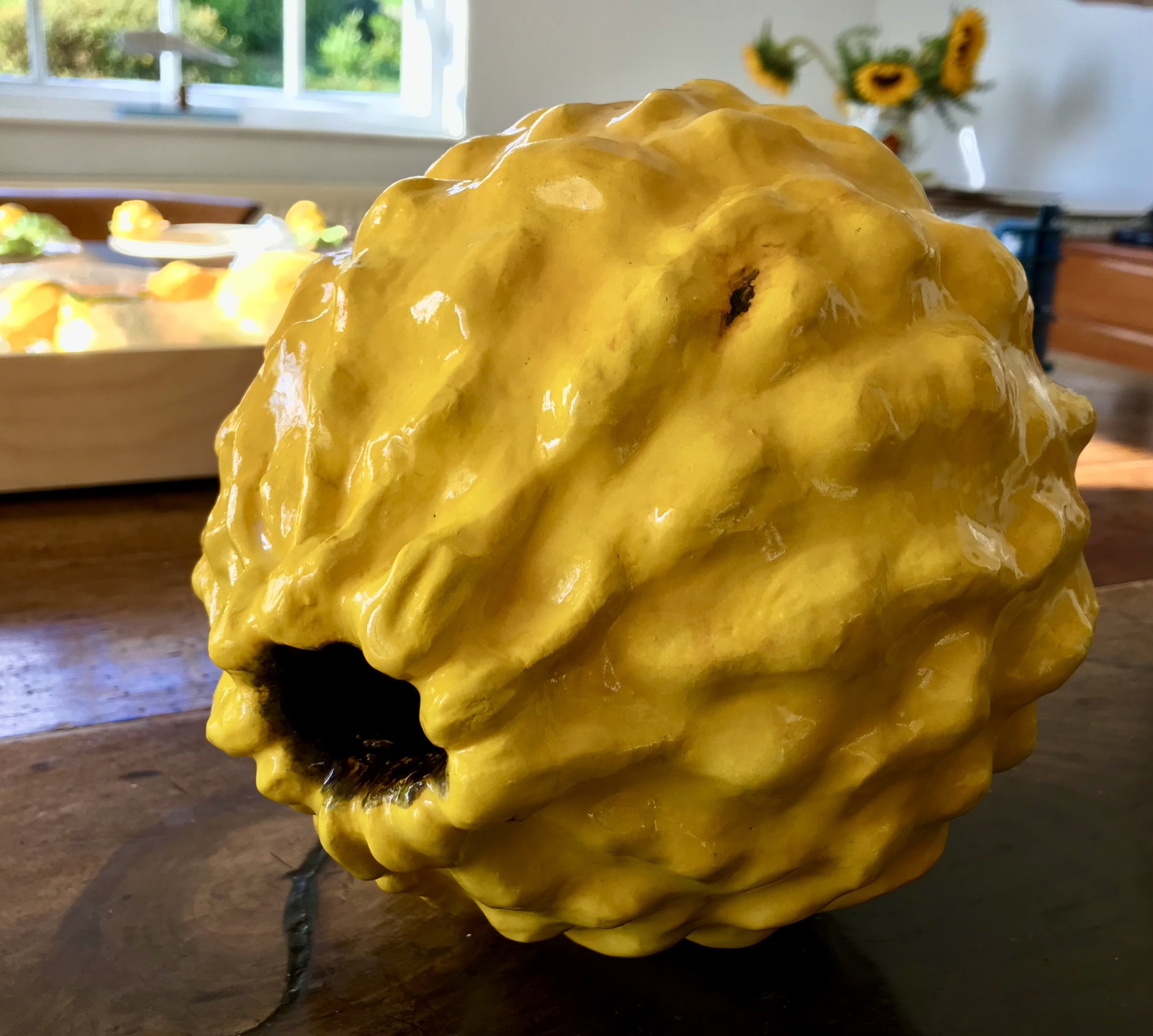
Citrus Limon Ponderosa: a weighty contemplation.
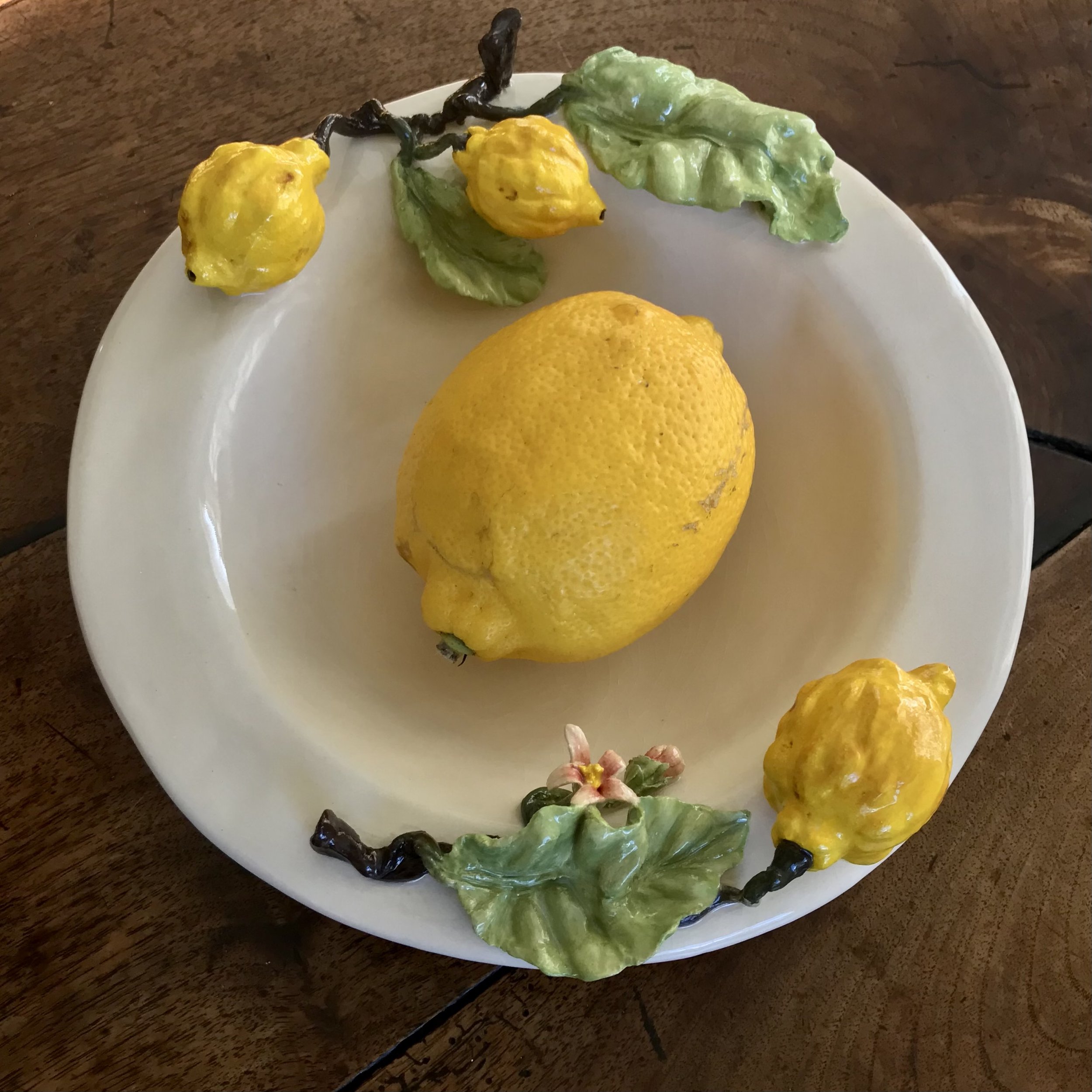
Hand built bowl in Cornish stoneware clay, featuring sculpted ‘limone di Sorrento’.
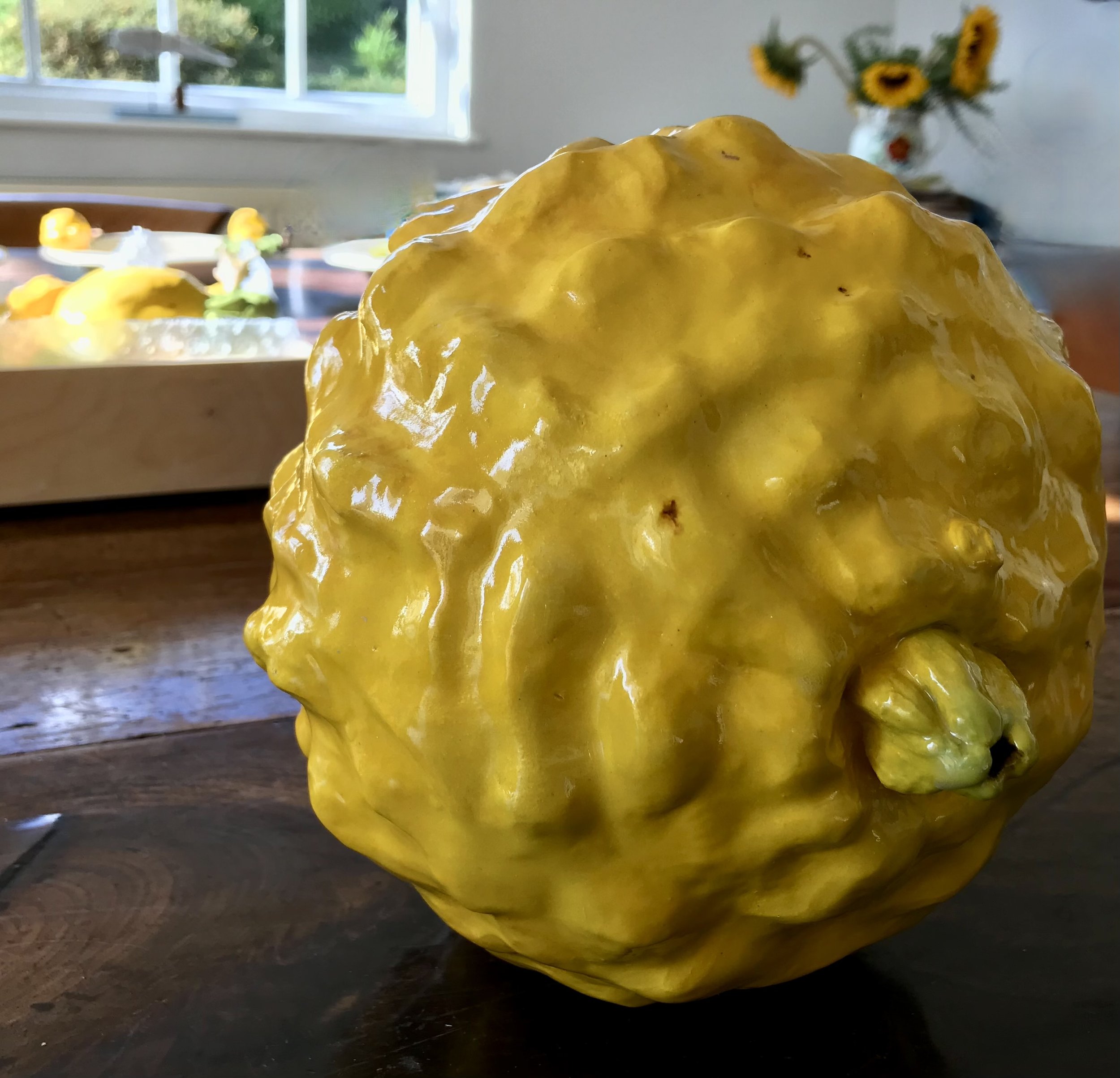
Citrus Limon Ponderosa.
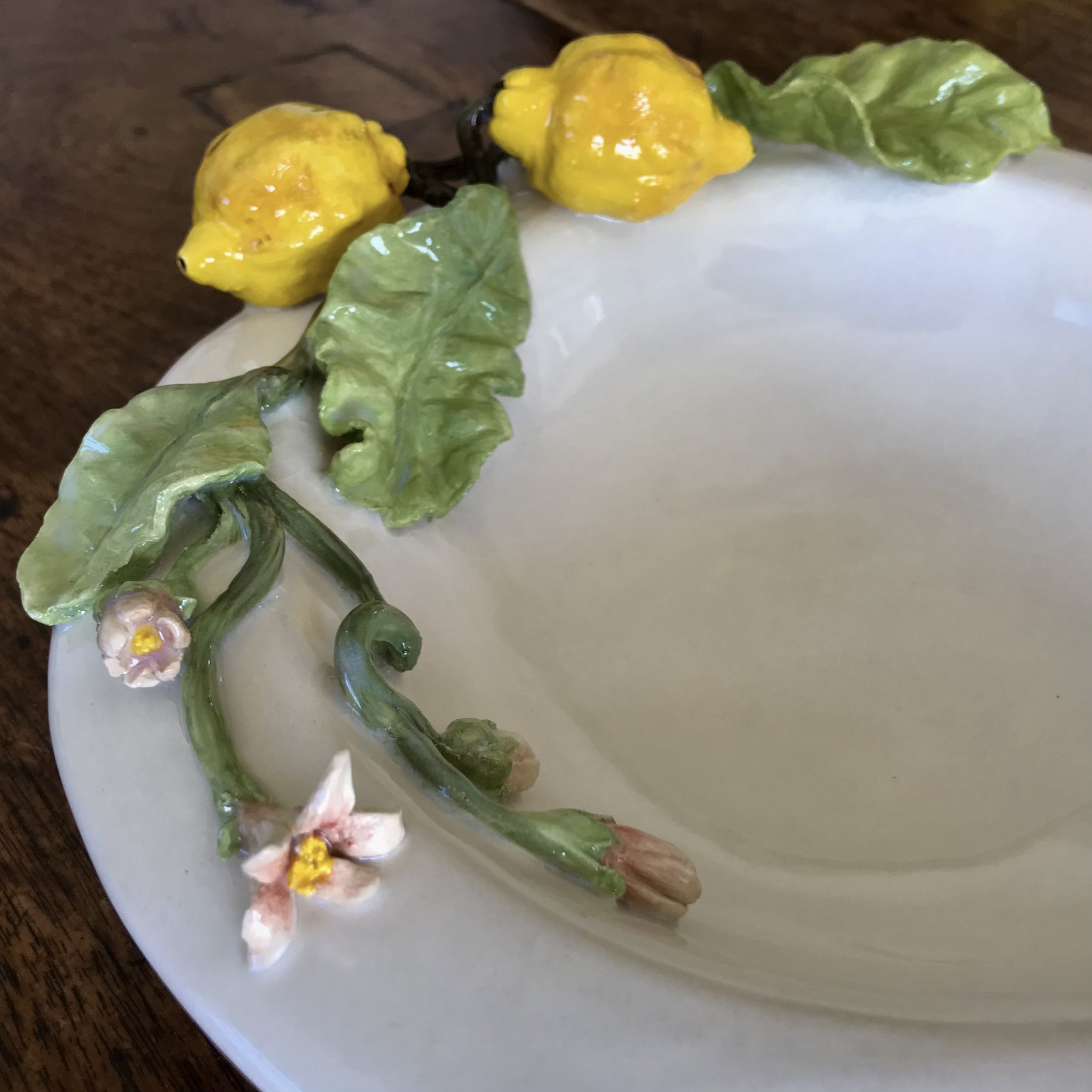
Detail of a bowl hand built in Cornish stoneware clay, featuring sculpted ‘limone di Amalfi’.
Centuripe Ware
Inspired by a rare style of Sicilian ceramics dating from the 3rd-2nd century BCE, known as Centuripe ware. The style is characterised by the use of polychrome pop colours and ornate, sculptural embellishments.
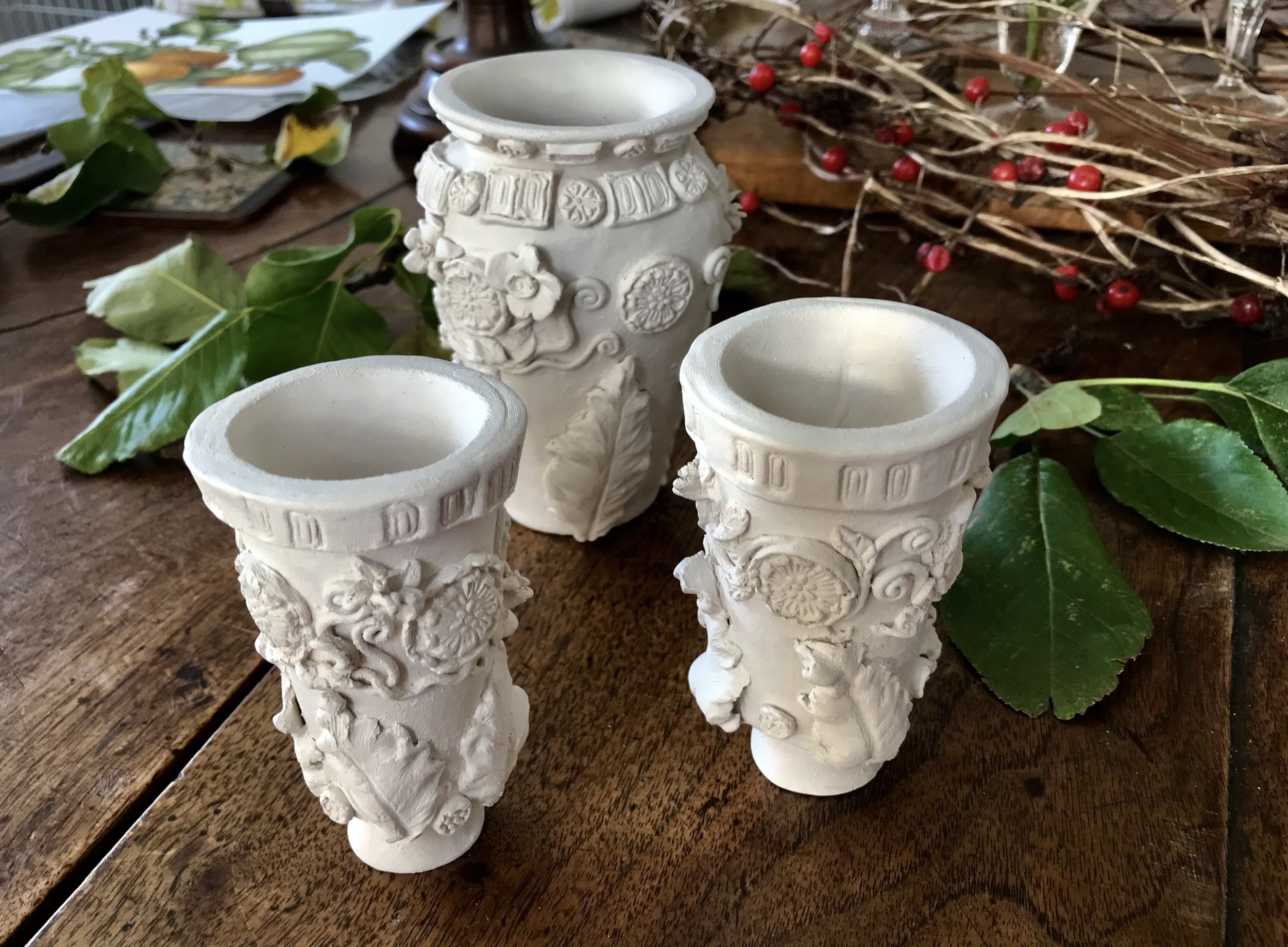
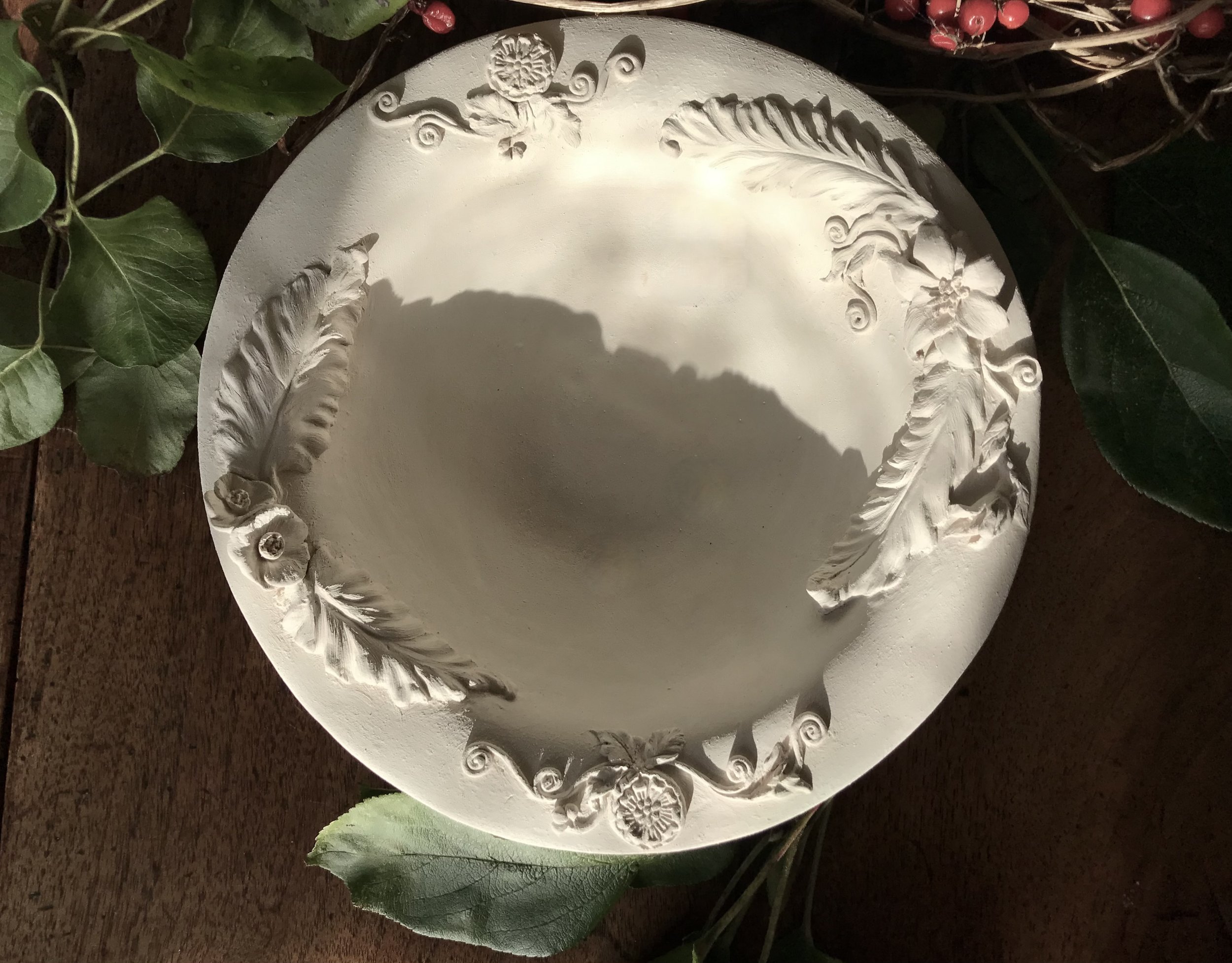
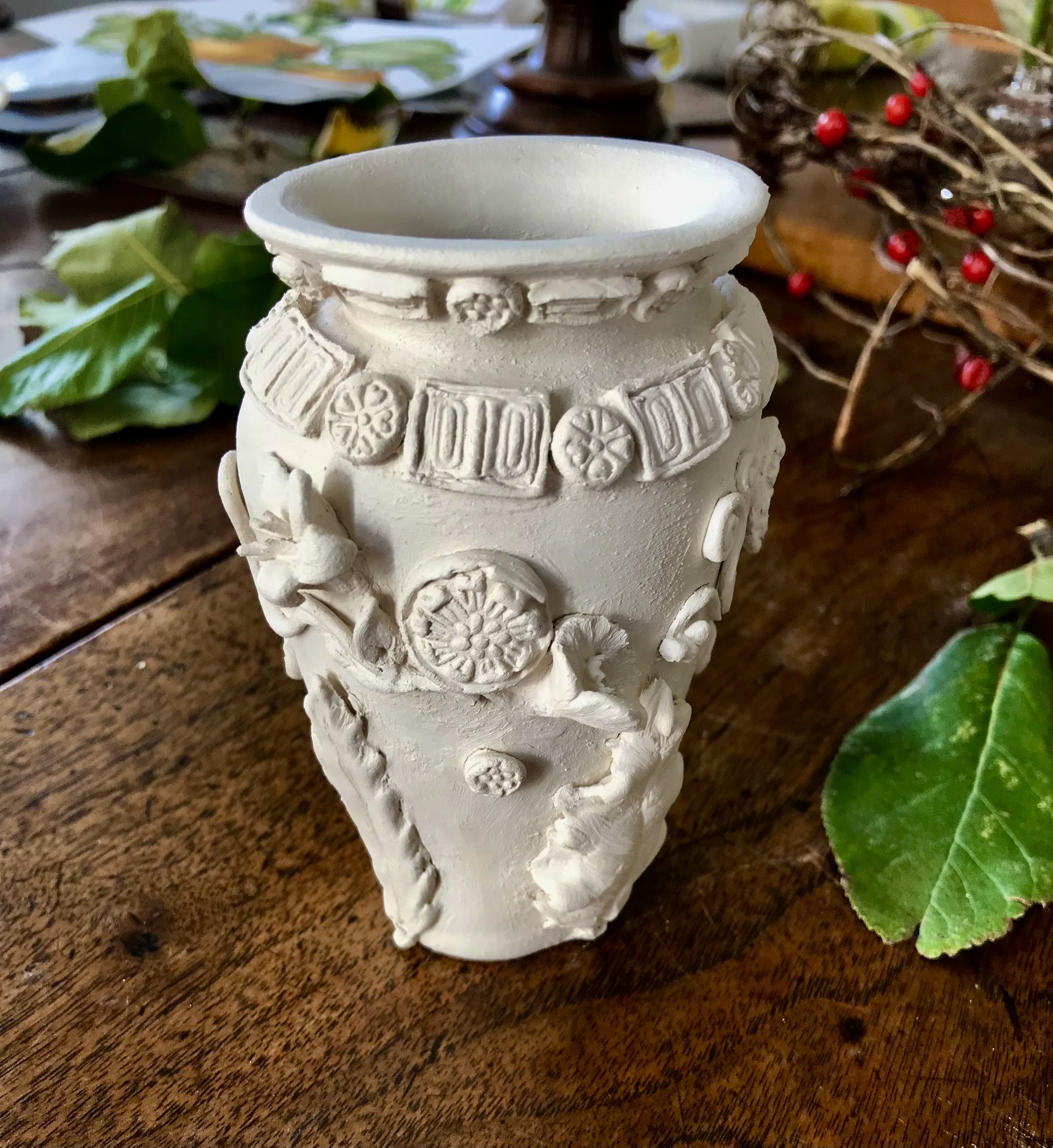
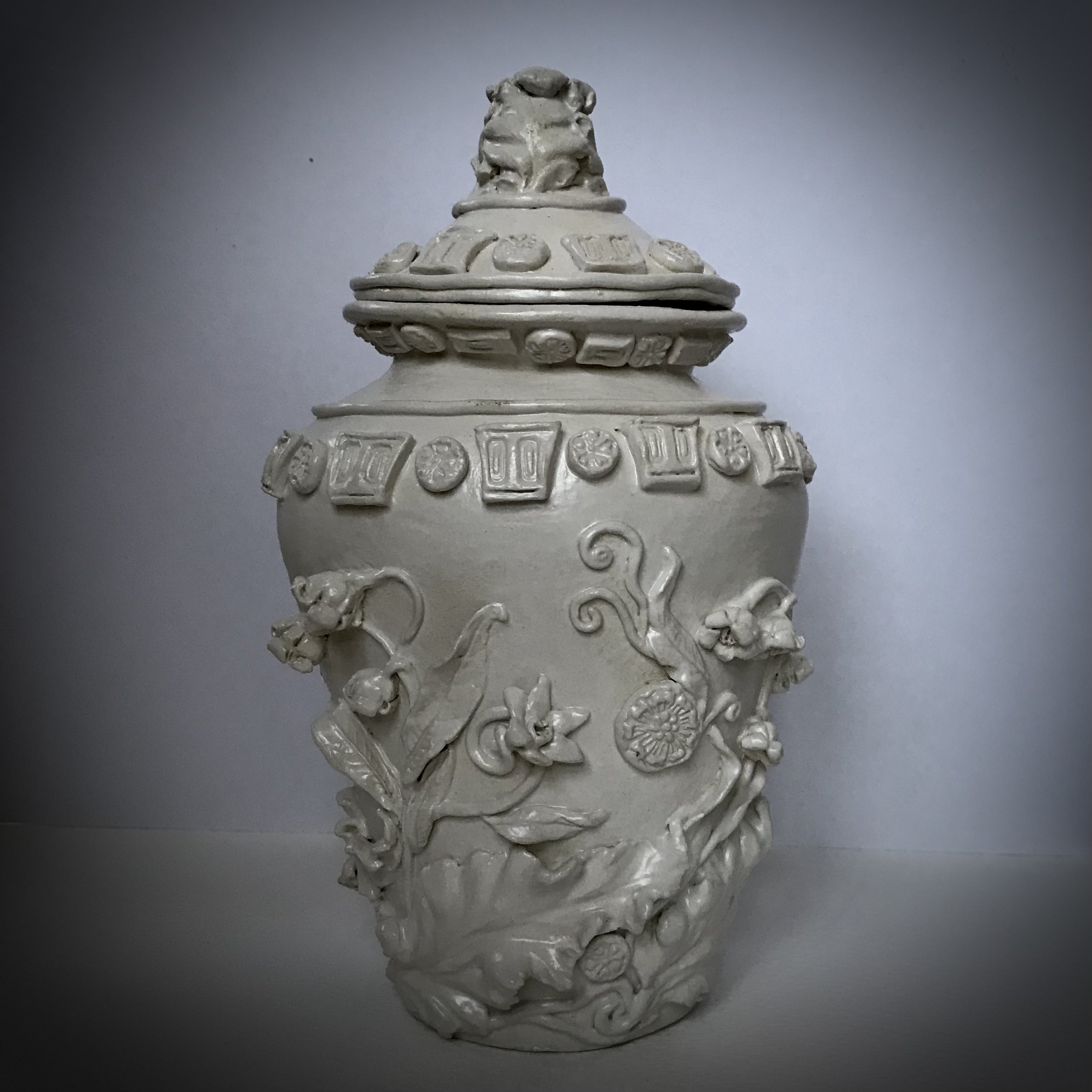
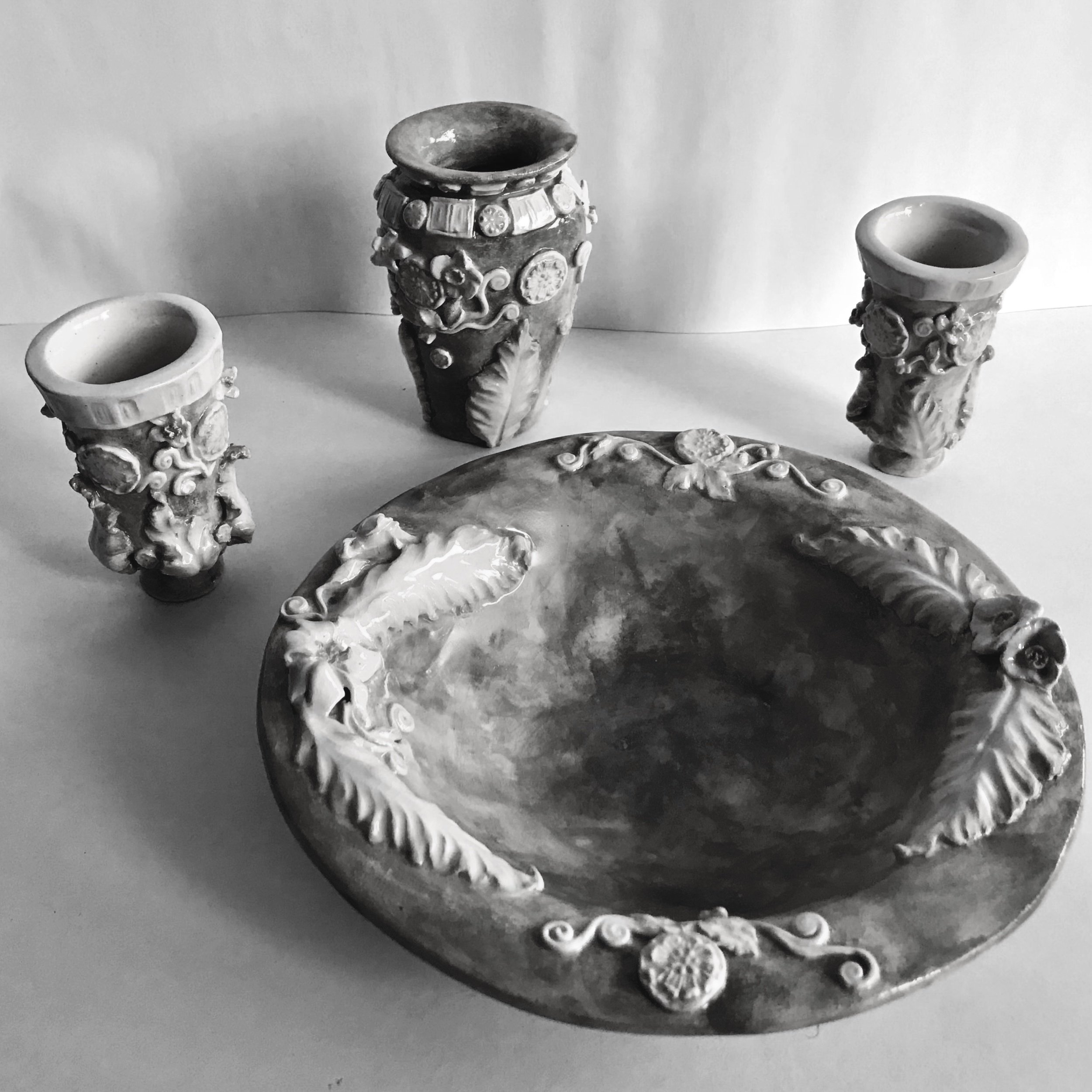
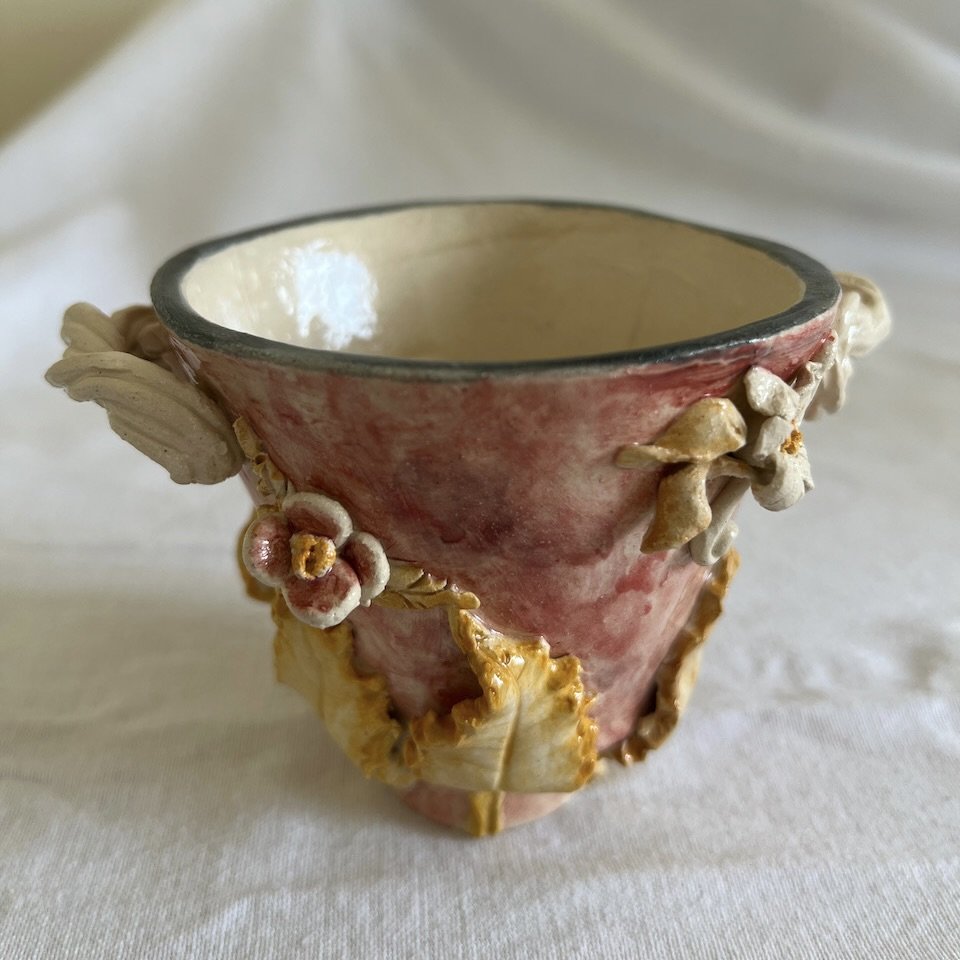
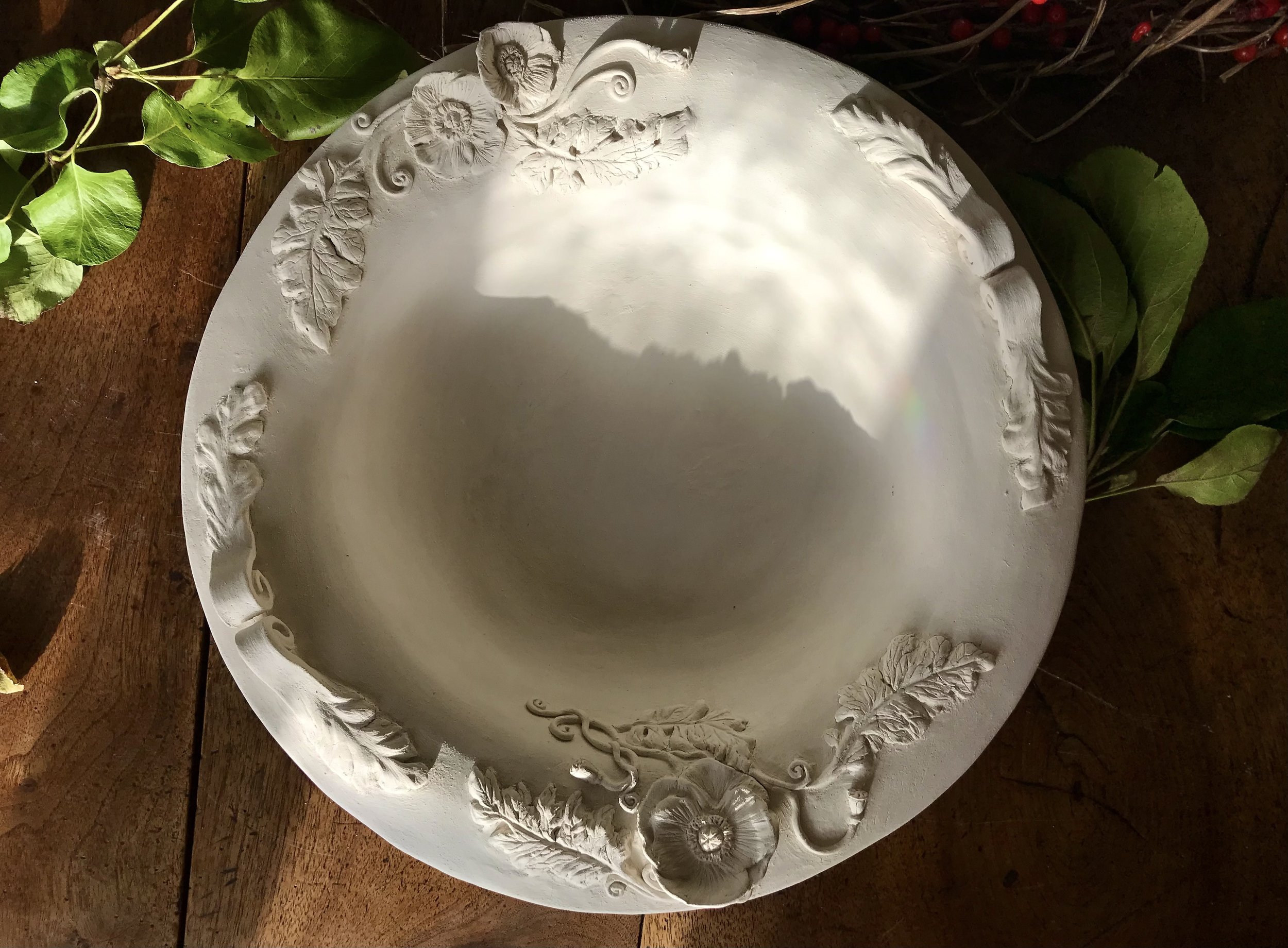
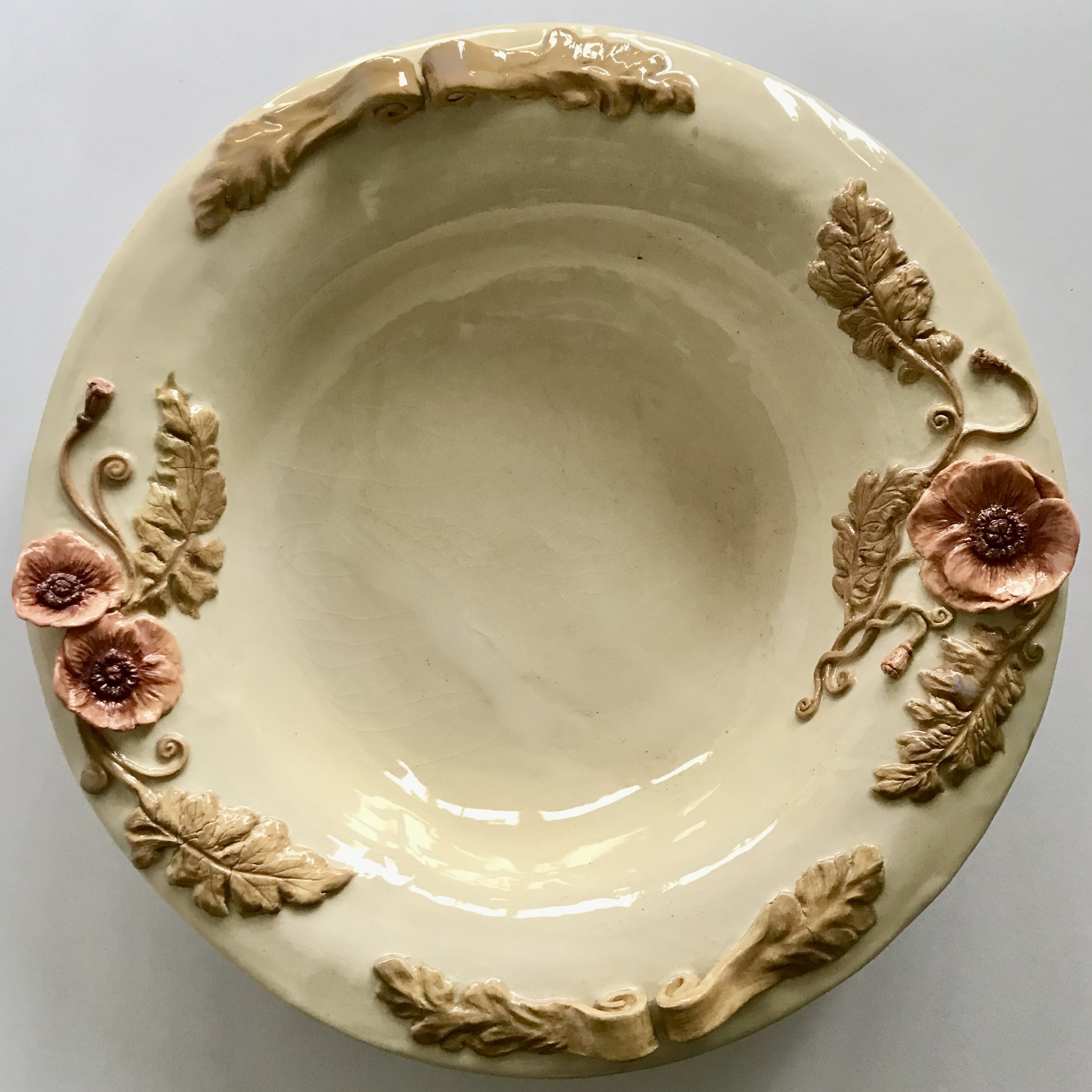
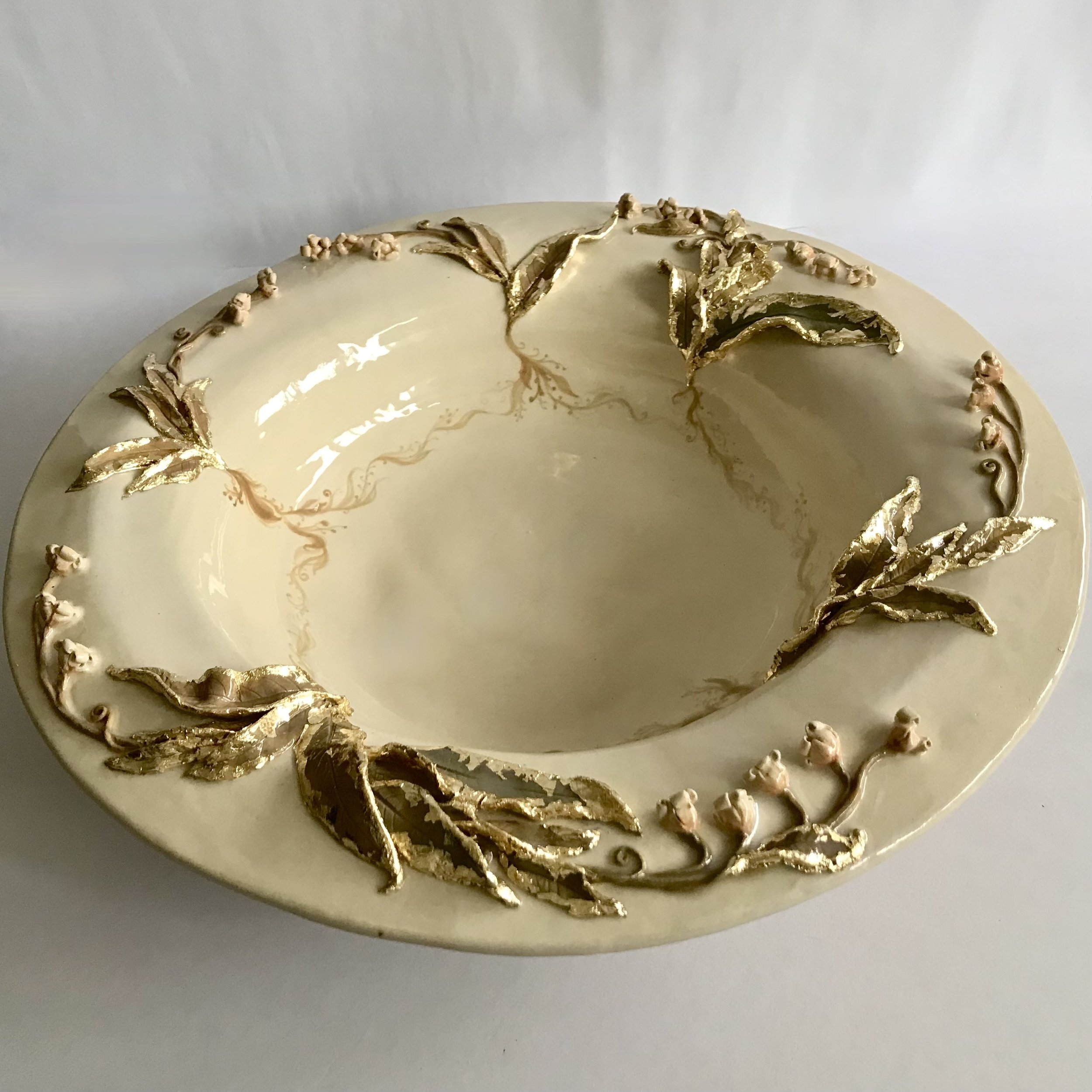
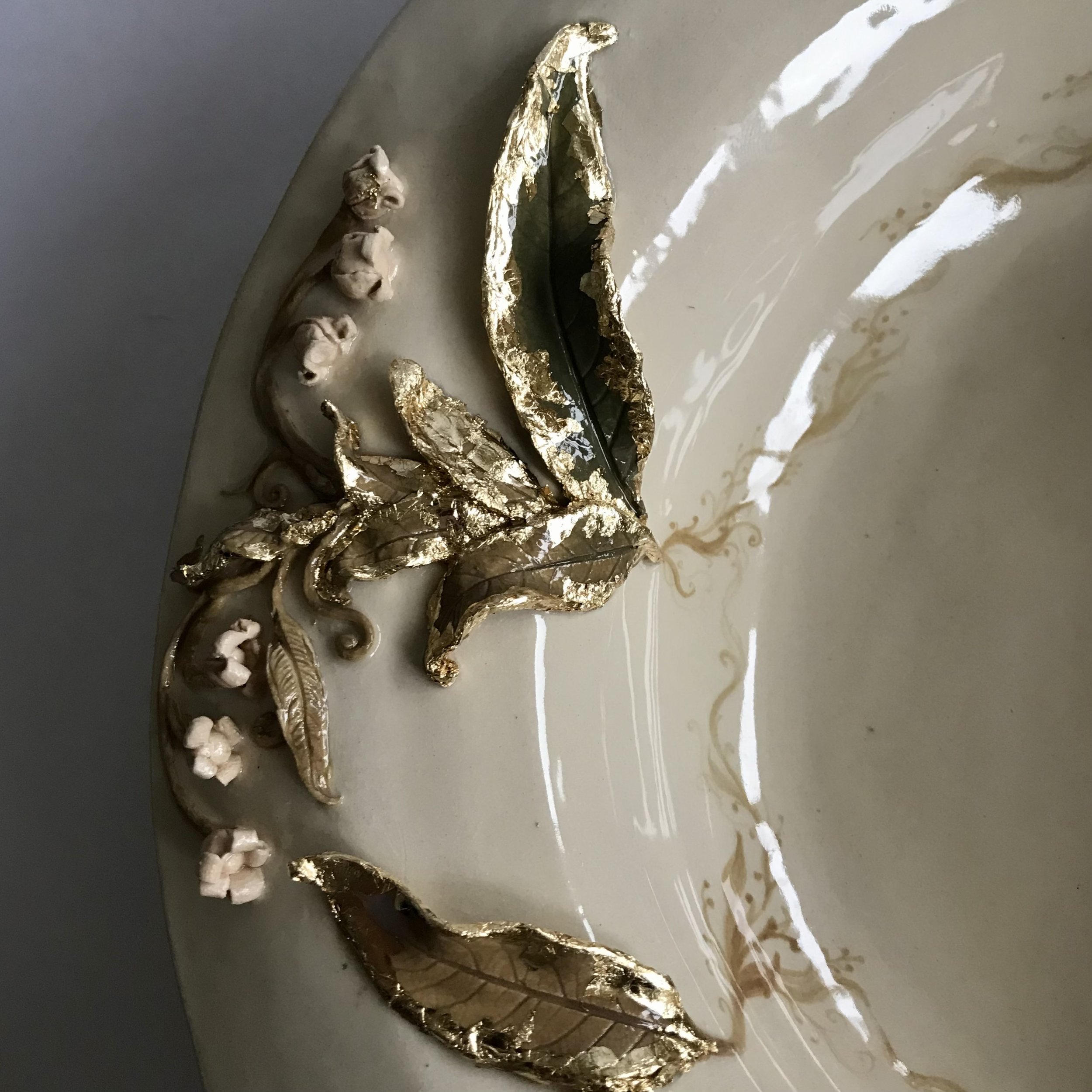
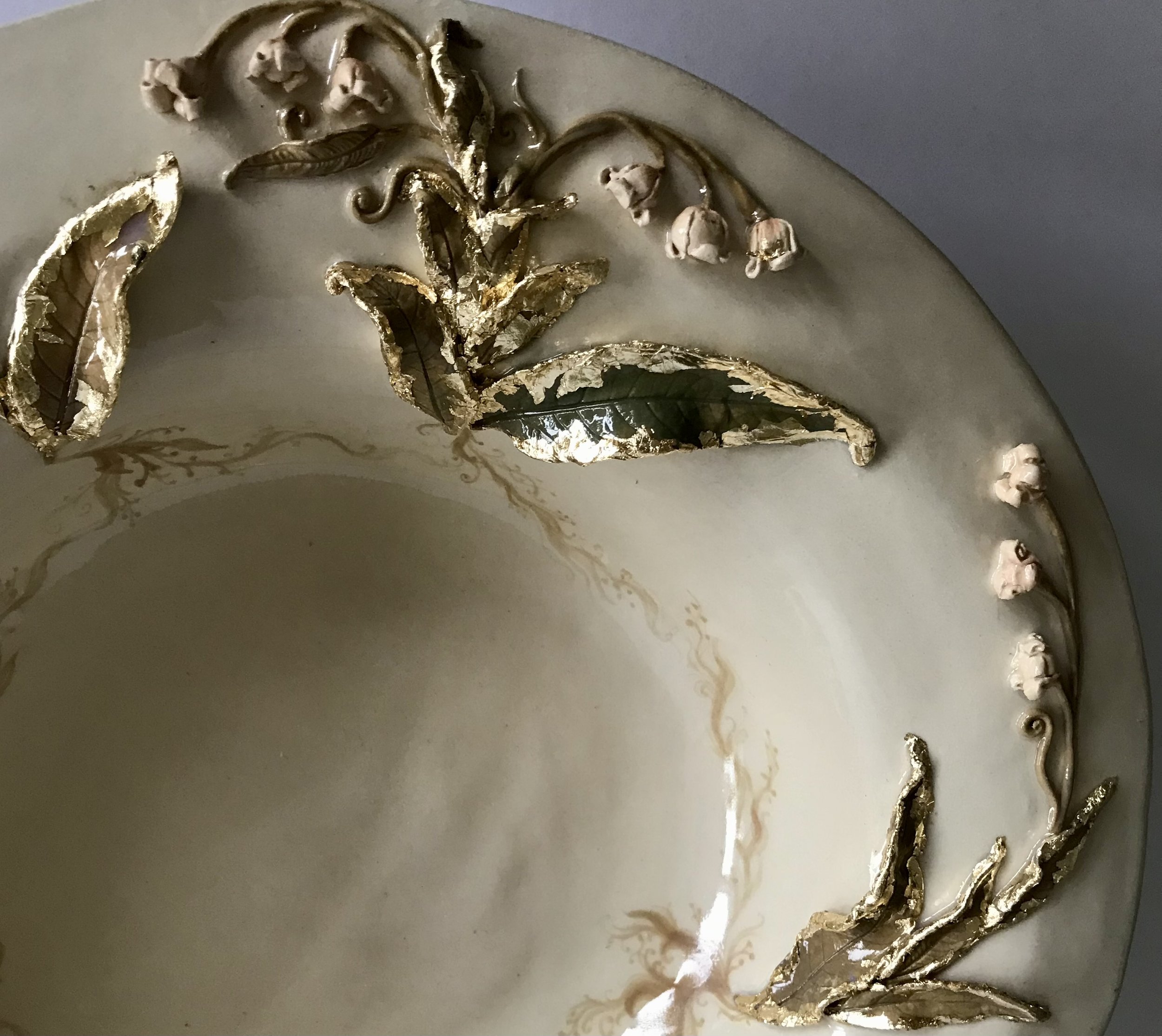
Marionettes
Each marionette takes on an individual personality as they emerge from the inanimate clay to receive the final brush strokes of a smile and the glint of the soul in their eyes.
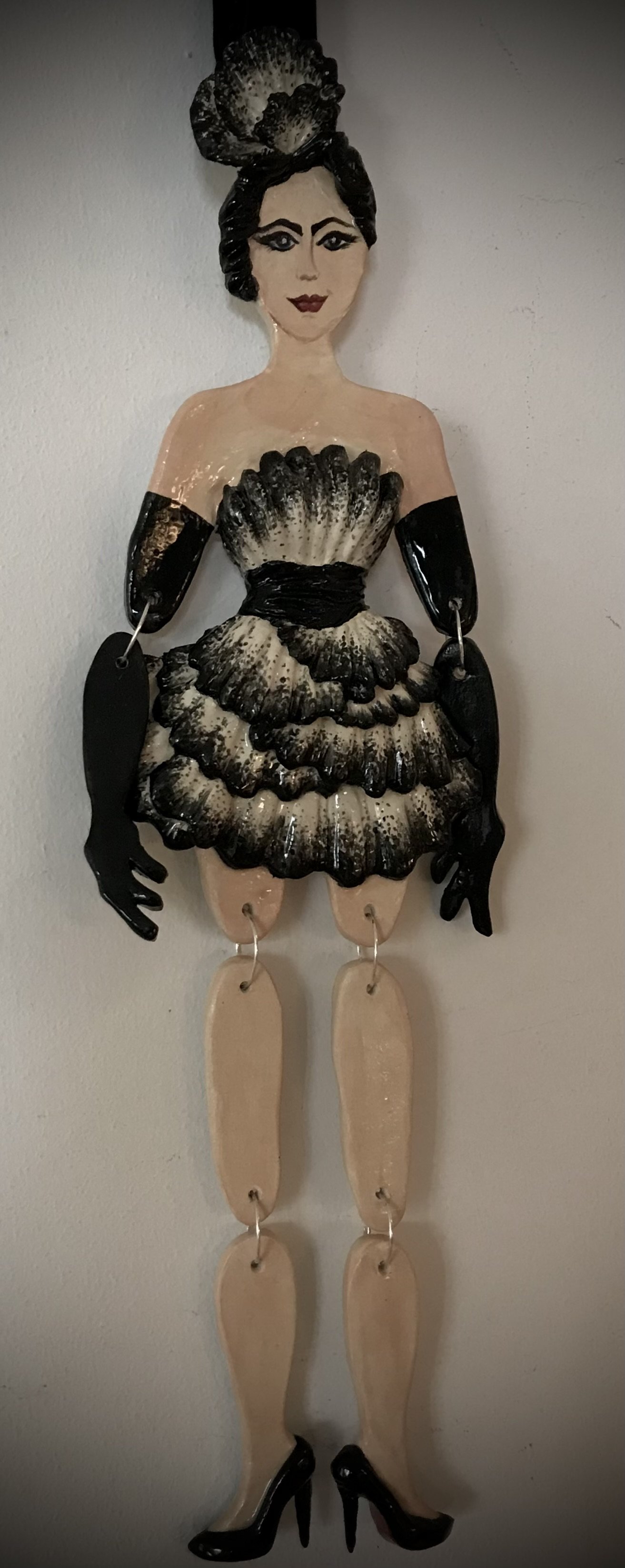
A special commission marionette, styled after the Christian Dior 'Junon' dress from the 1949 Tulip collection. Dior's design featured a magnificent skirt of ombréed petals, an abstraction of peacock feathers without the 'eyes', which obliquely referenced the bird sacred to Juno, queen of the Olympians. Cornish stoneware ceramic, sculpted and decorated by hand. 40cm tall.
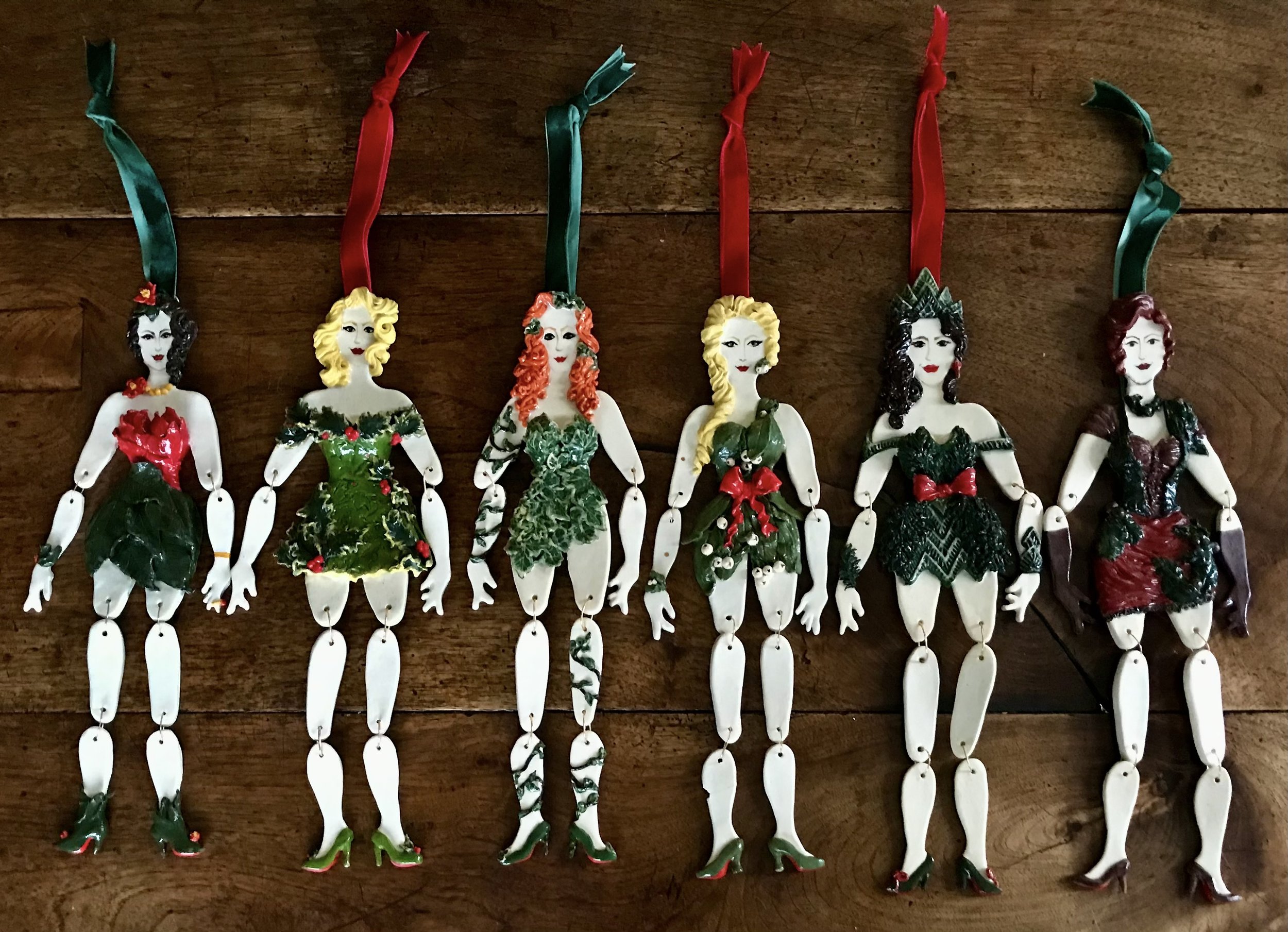
'Maidens of Midwinter' Each marionette, sculpted from Cornish stoneware clay, is a personification of a classic variety of festive foliage. The impression of spruce sprigs and ivy leaves, foraged for while out walking in the countryside and then pressed into the clay, remain.
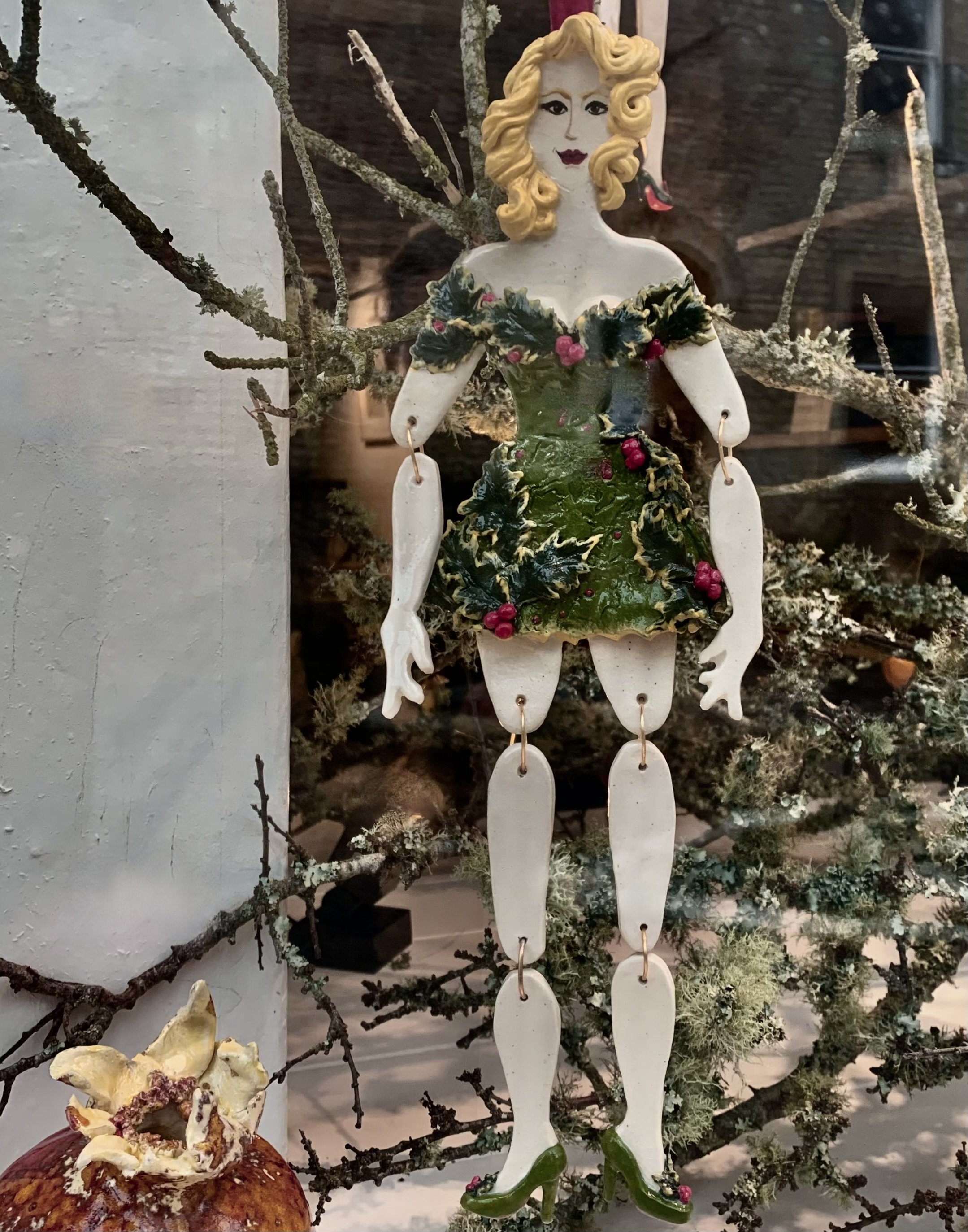
'My Golly Miss Holly' Cornish stoneware ceramic, sculpted and decorated by hand with prickly holly leaves and ripe red berries. 33cm tall.
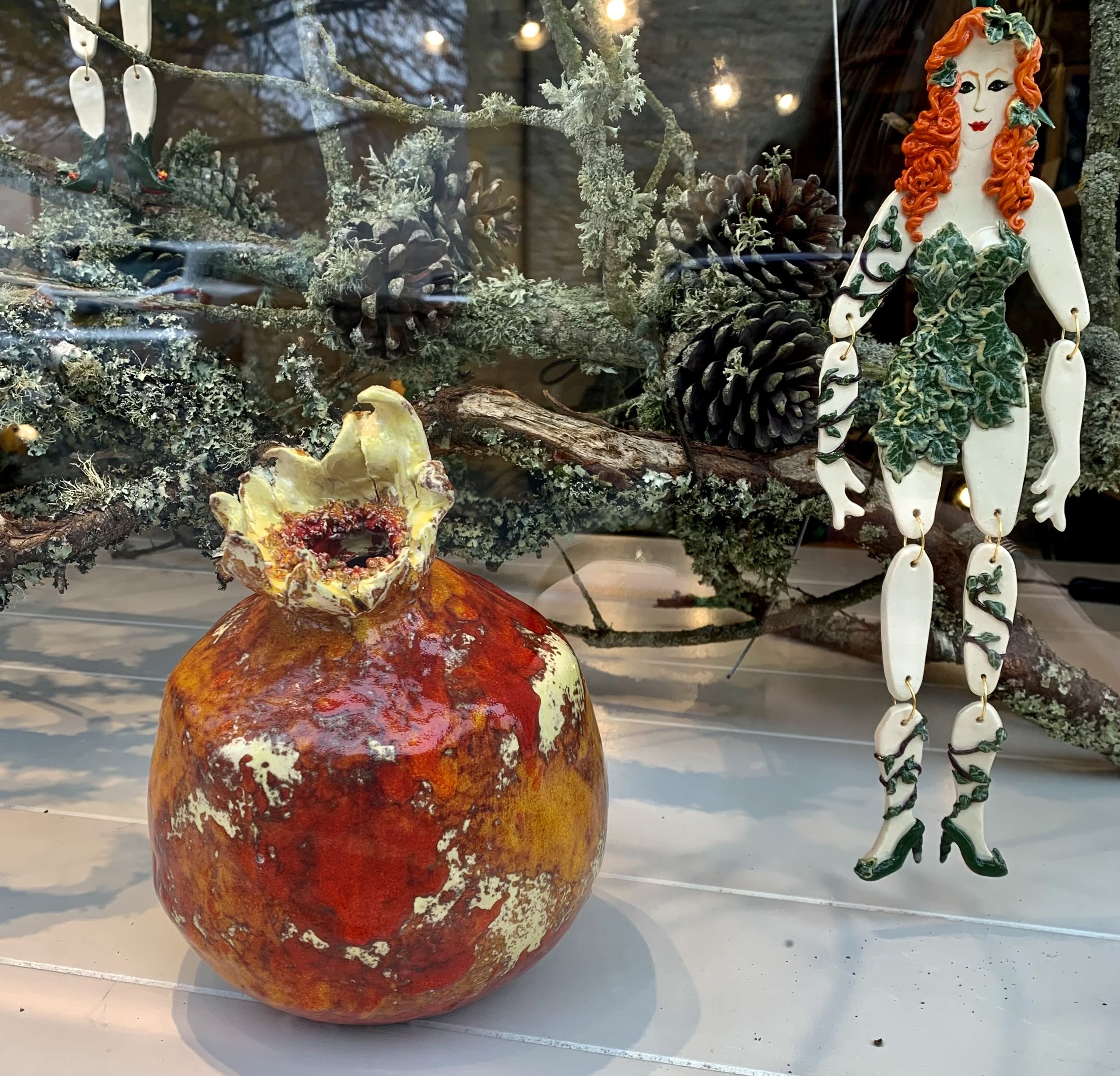
'Poison Ivy' stayed beside a volcanic glazed pomegranate. Cornish stoneware ceramic, sculpted and decorated by hand with layers of ivy leaves and entwining tendrils. 33cm tall.
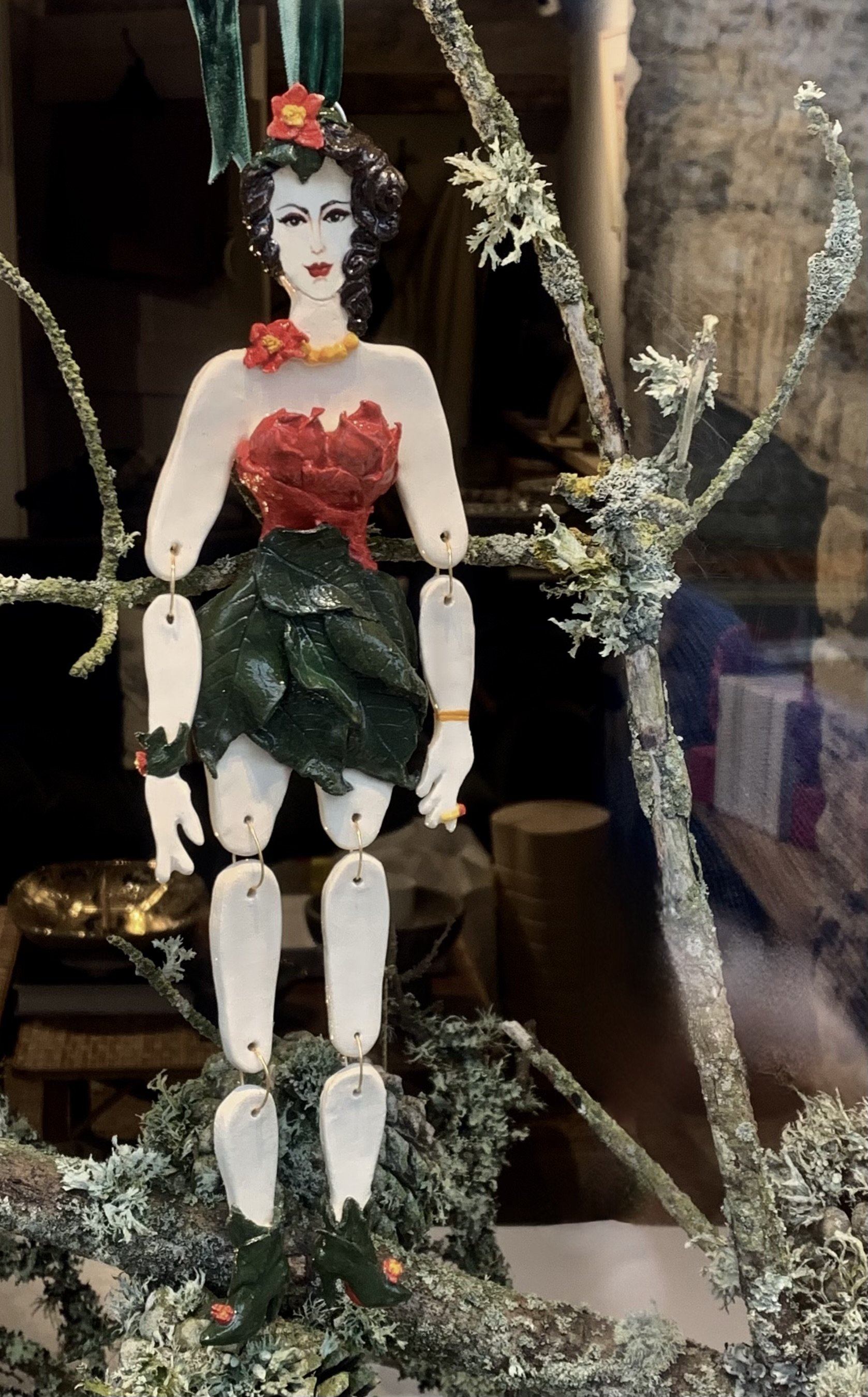
'Miss Plummy Poinsettia' Cornish stoneware ceramic, sculpted and decorated by hand with leaves and poinsettia petals. 33cm tall.
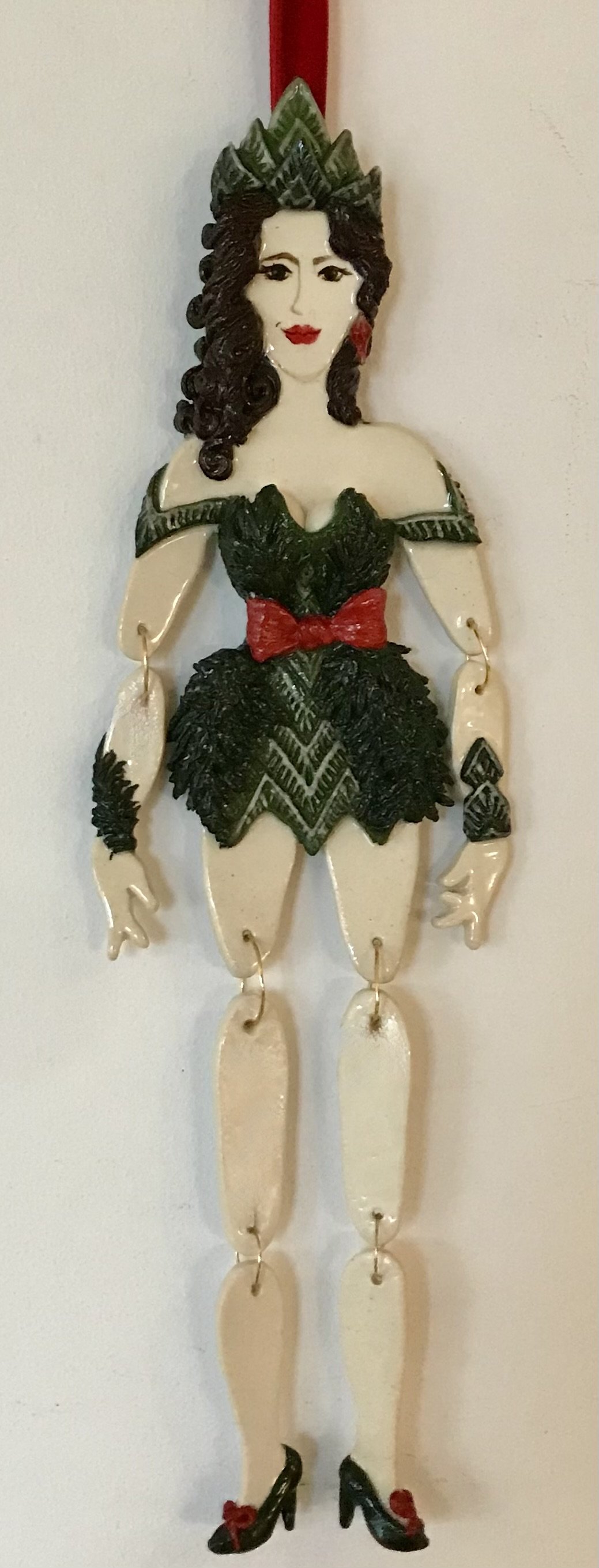
'Spruced-Up' Cornish stoneware ceramic, sculpted and decorated by hand with patterns resembling evergreen foliage. 33cm tall.

'Kiss-Me Miss Mistletoe' Cornish stoneware ceramic, sculpted and decorated by hand with leafy bunches of berry-bearing mistletoe. 33cm tall.
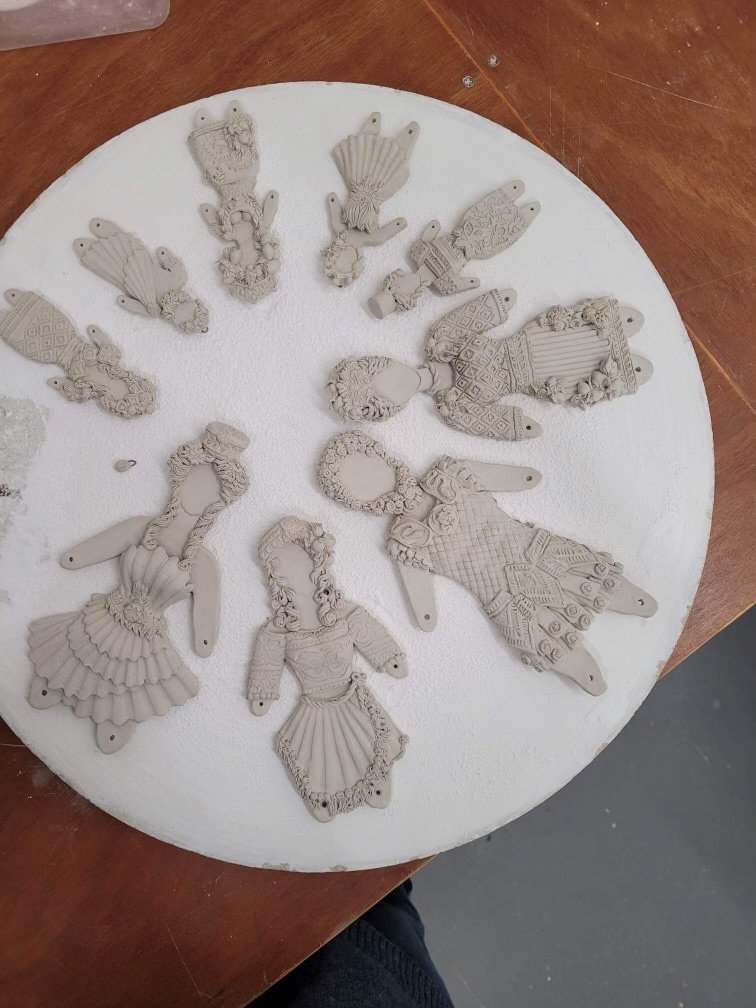
Biscuit ware bodies.
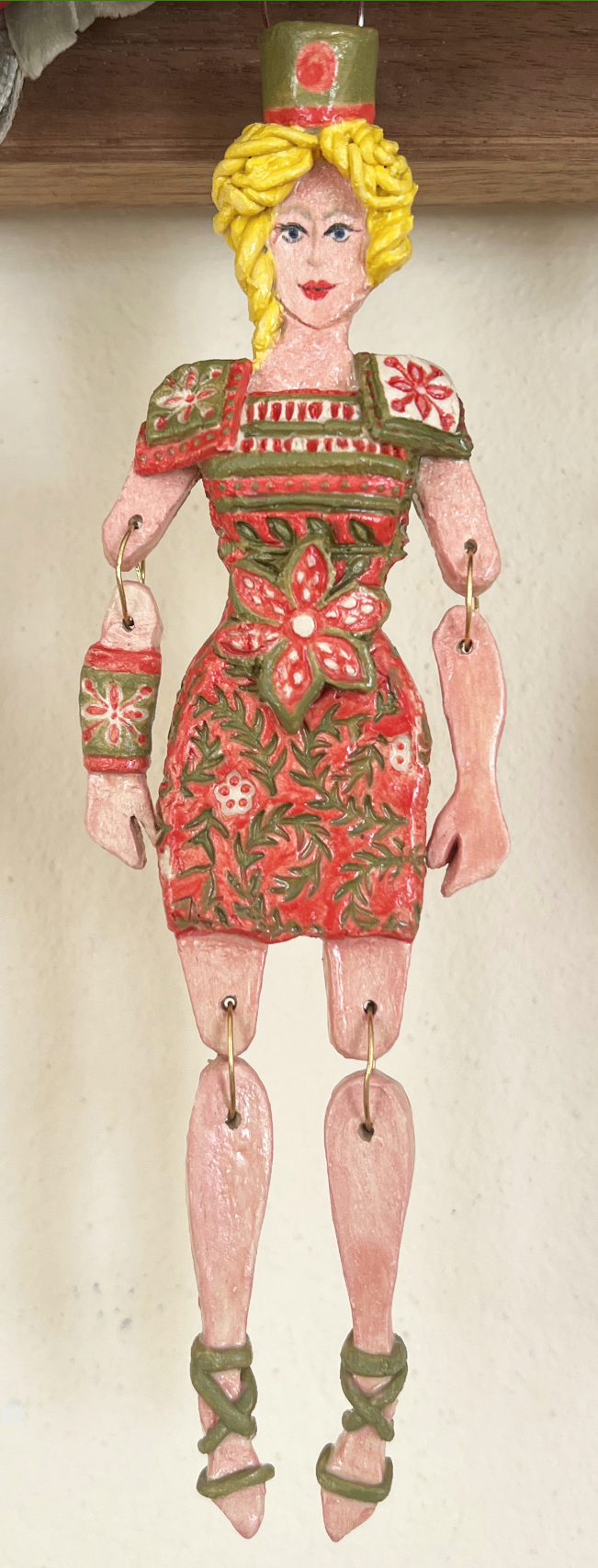
Miniature marionette of the goddess Proserpina. Cornish stoneware ceramic, sculpted and decorated by hand. 19cm tall.
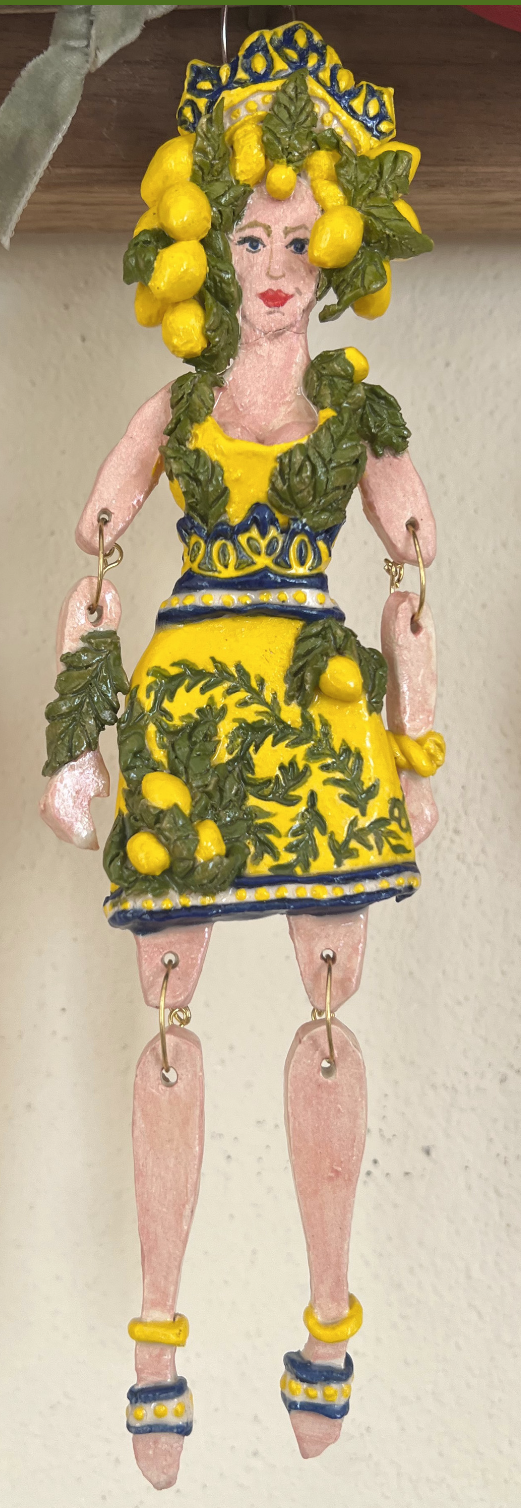
'Limoncella'. Miniature marionette of a καρπος-φορος (‘fruit-bearer’), featuring golden Sicilian lemons. Cornish stoneware ceramic, sculpted and decorated by hand. 19cm tall.
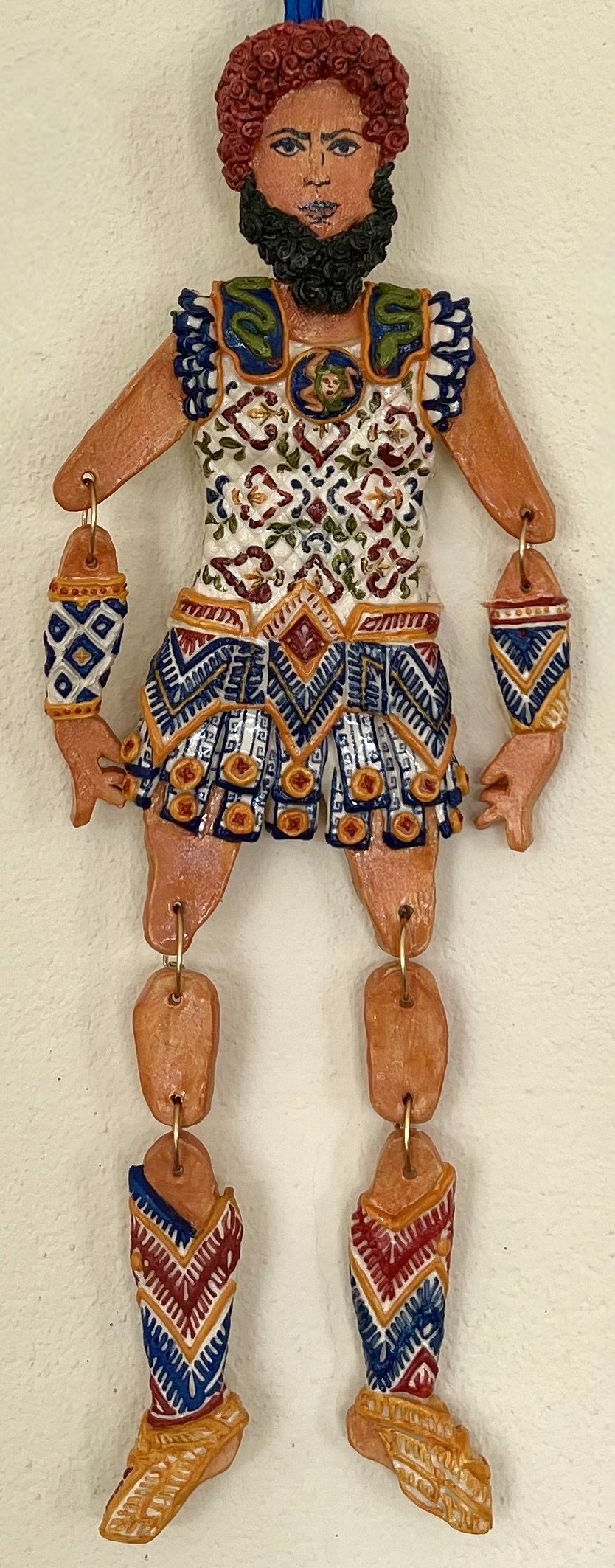
Marionette of Pluto, god of the Underworld. Cornish stoneware ceramic, sculpted and decorated by hand. 40cm tall.
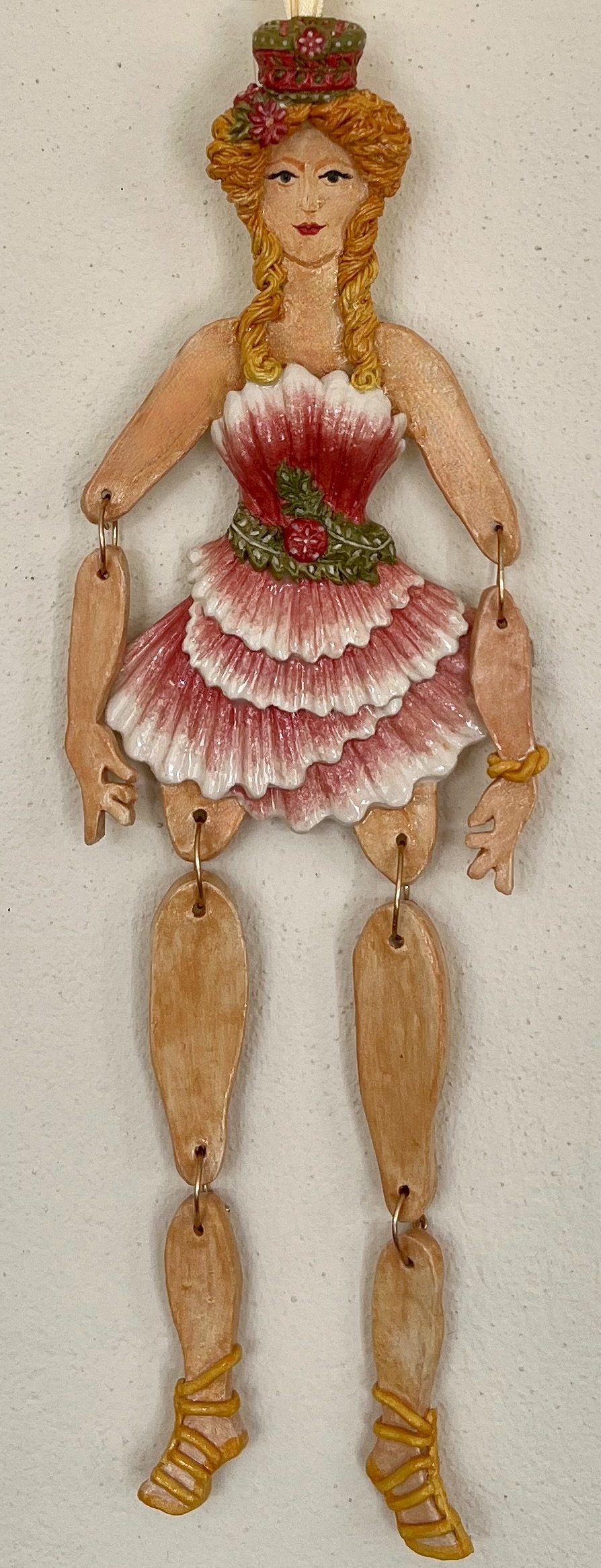
Ceramic marionette Proserpina. Cornish stoneware ceramic, sculpted and decorated by hand. 40cm tall.
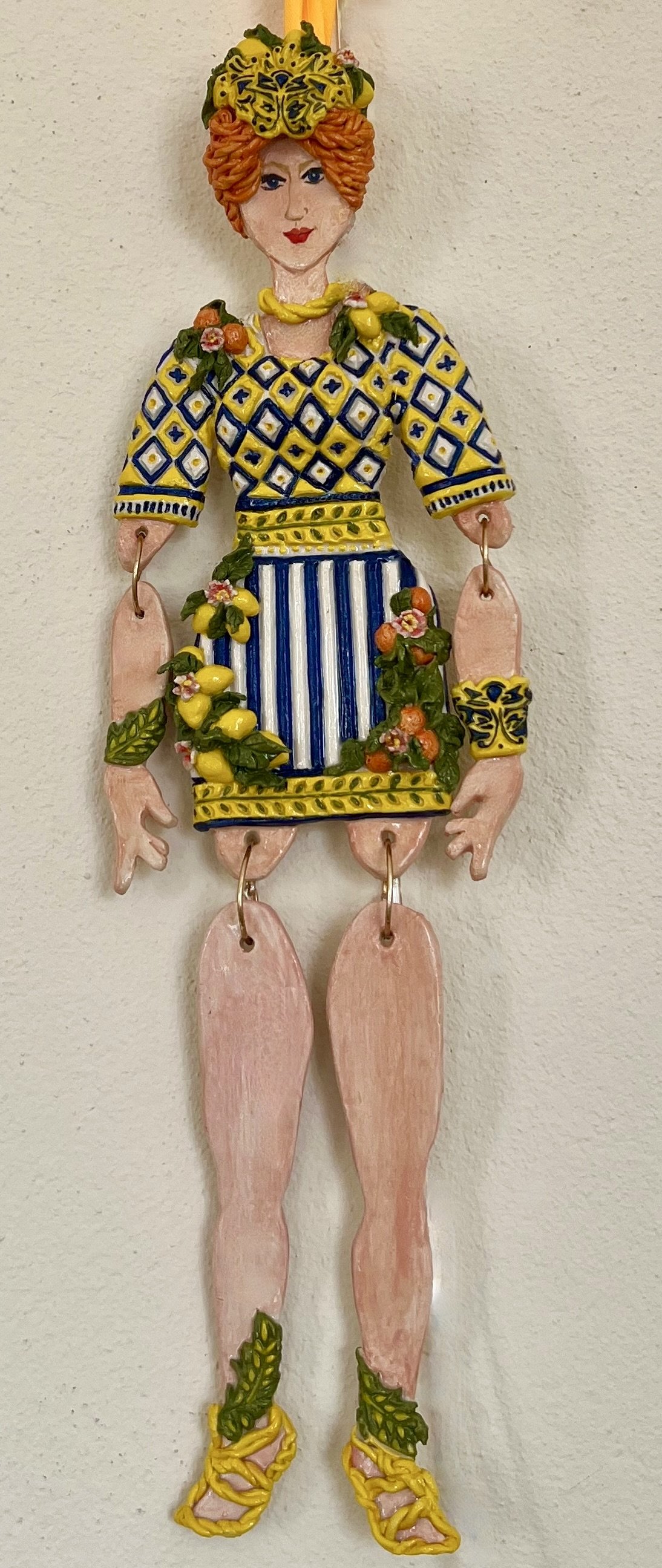
'Fruittana'. Cornish stoneware ceramic, sculpted and decorated by hand. 40cm tall.
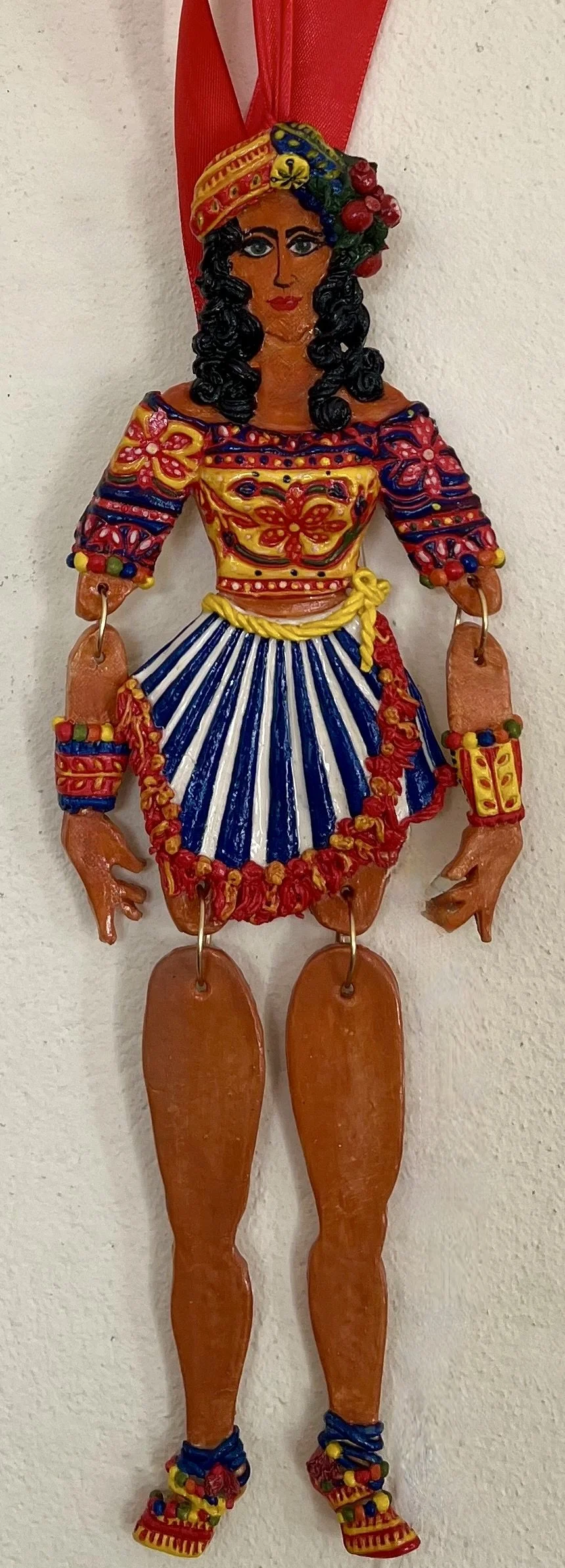
'Carretta'. Her dress recalls the bright colours, tassels and pompoms that adorn the traditional Sicilian carts. Cornish stoneware ceramic, sculpted and decorated by hand. 40cm tall.
